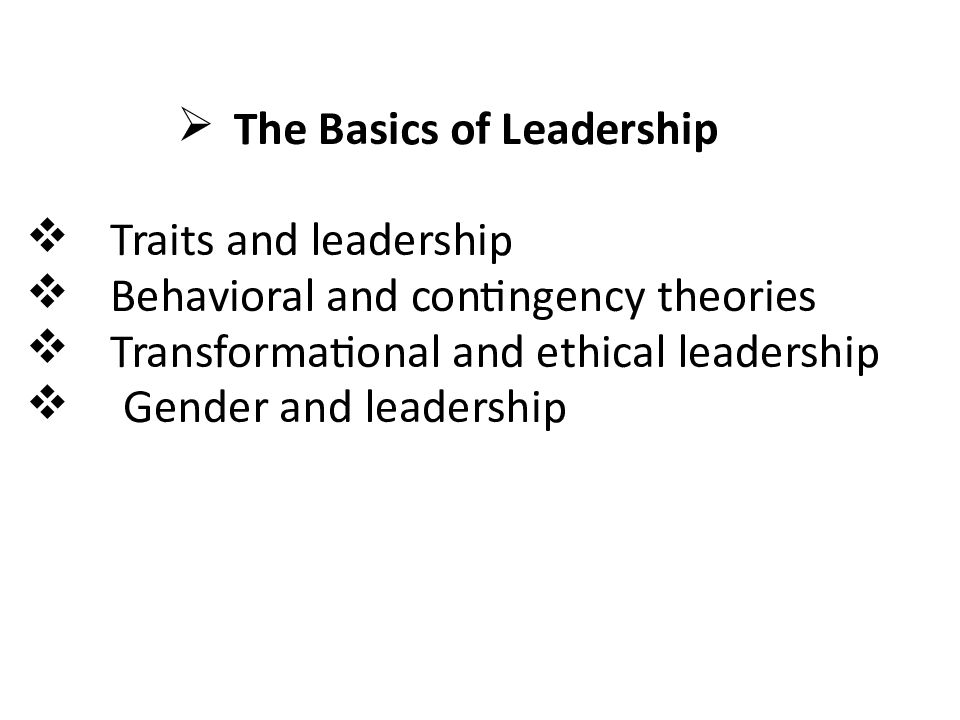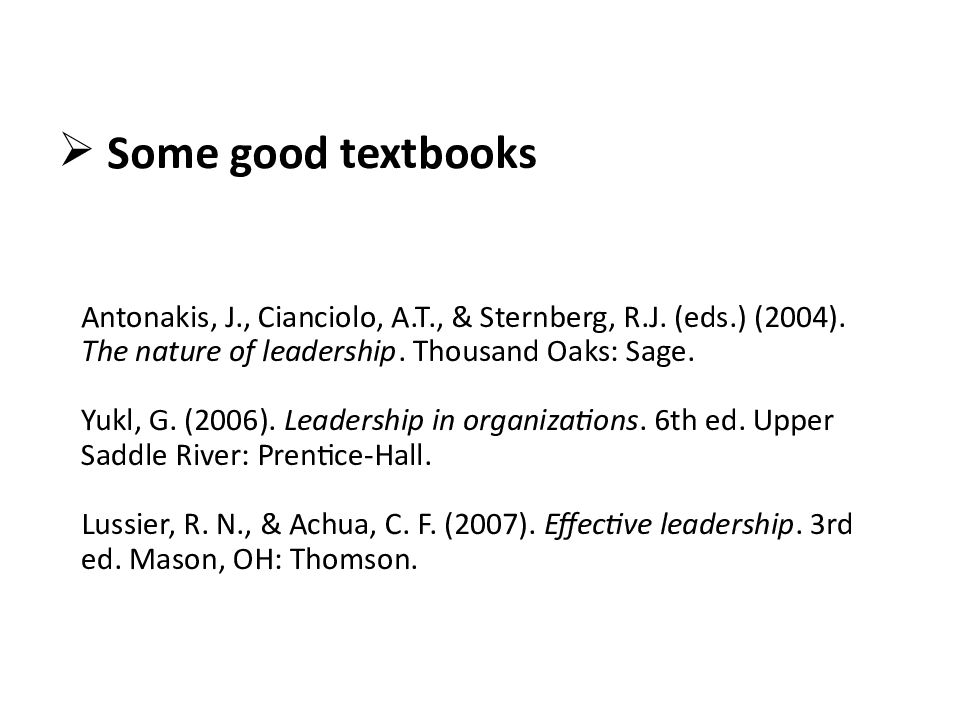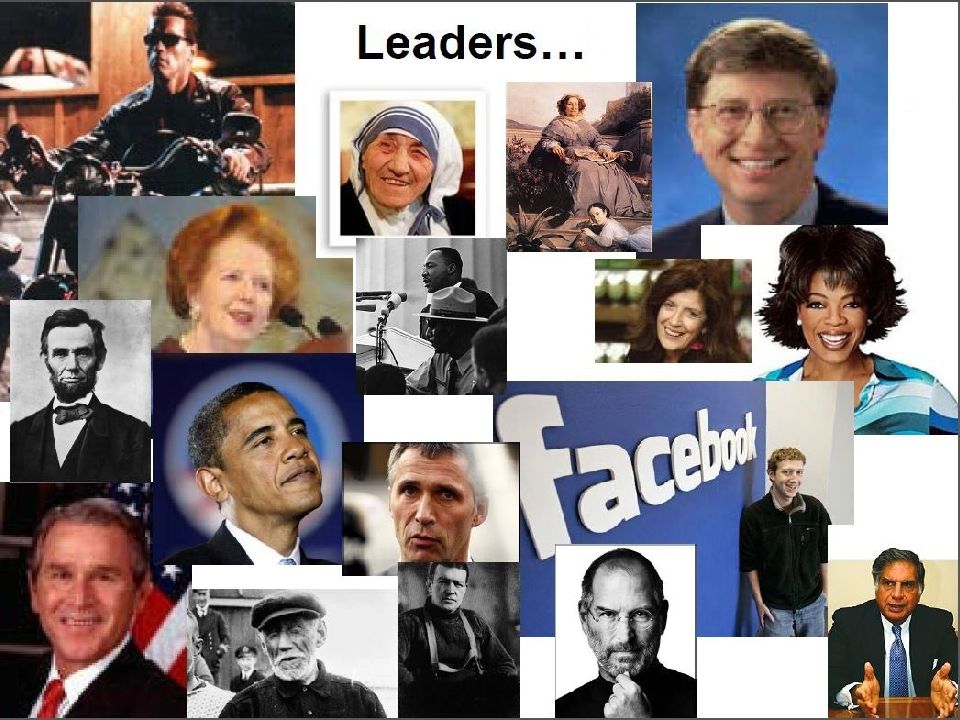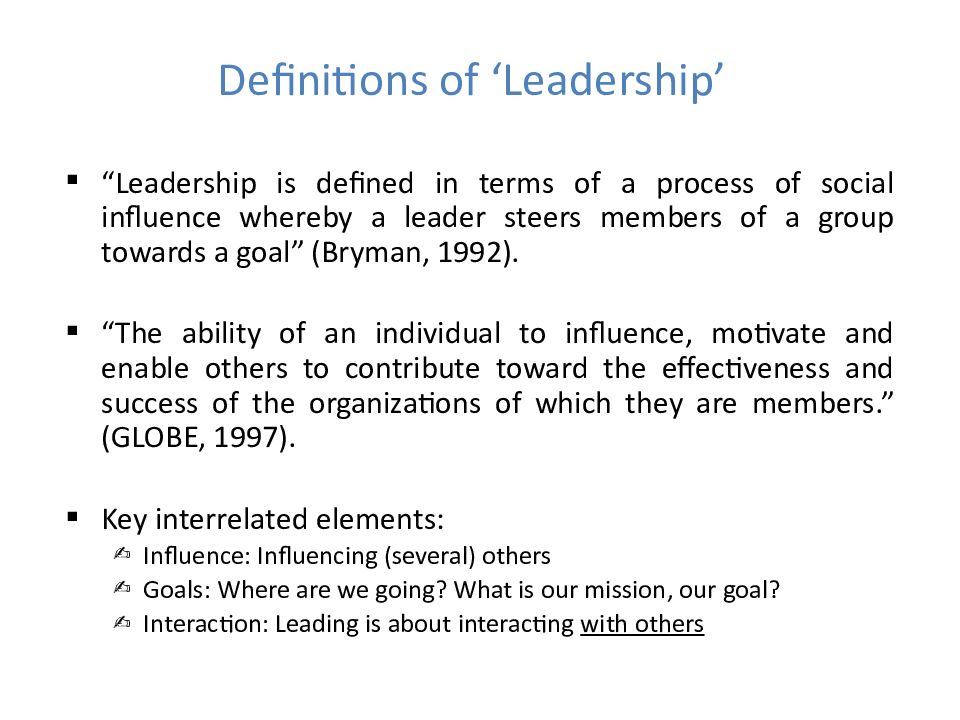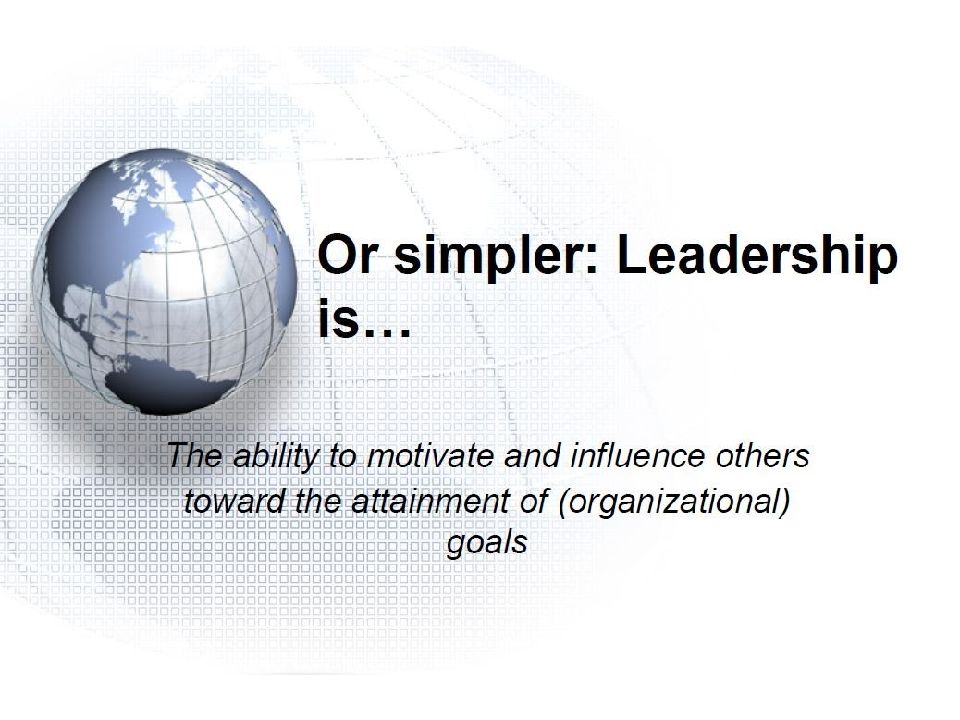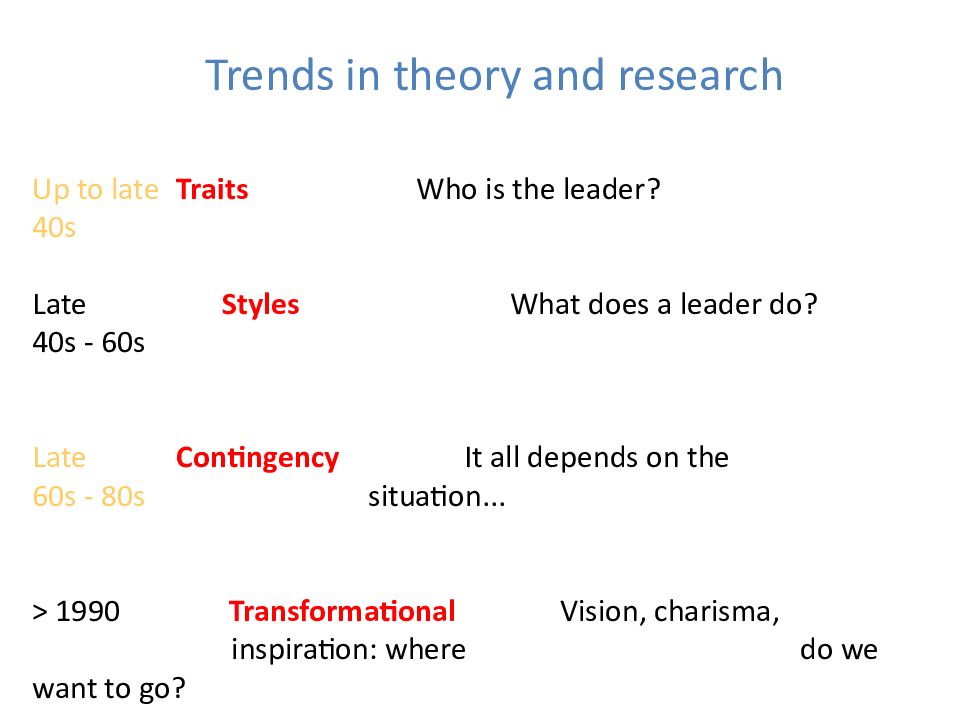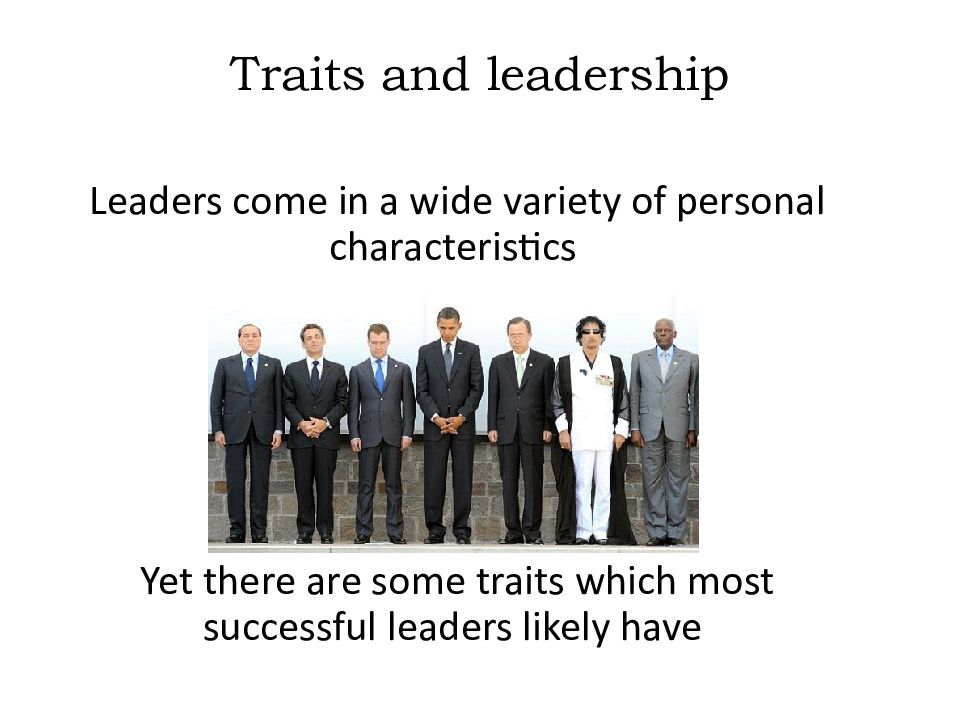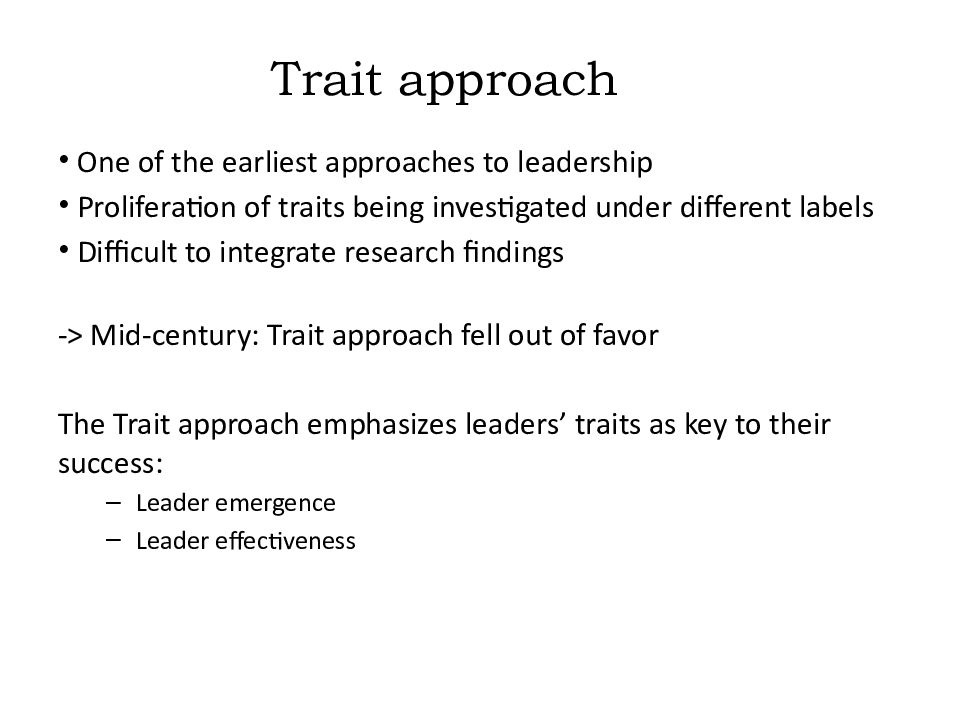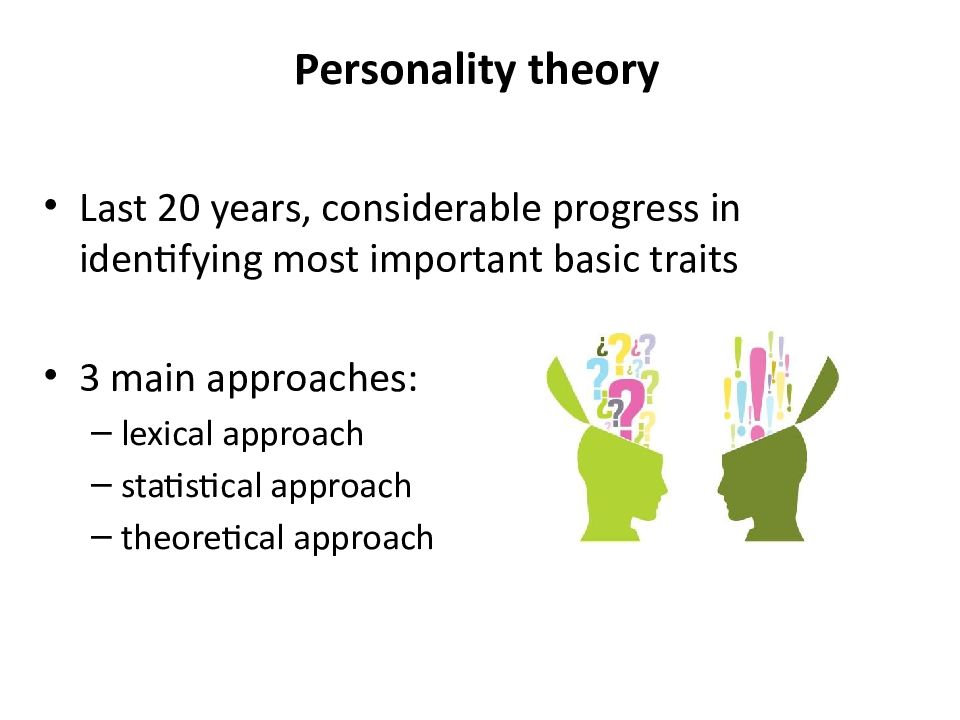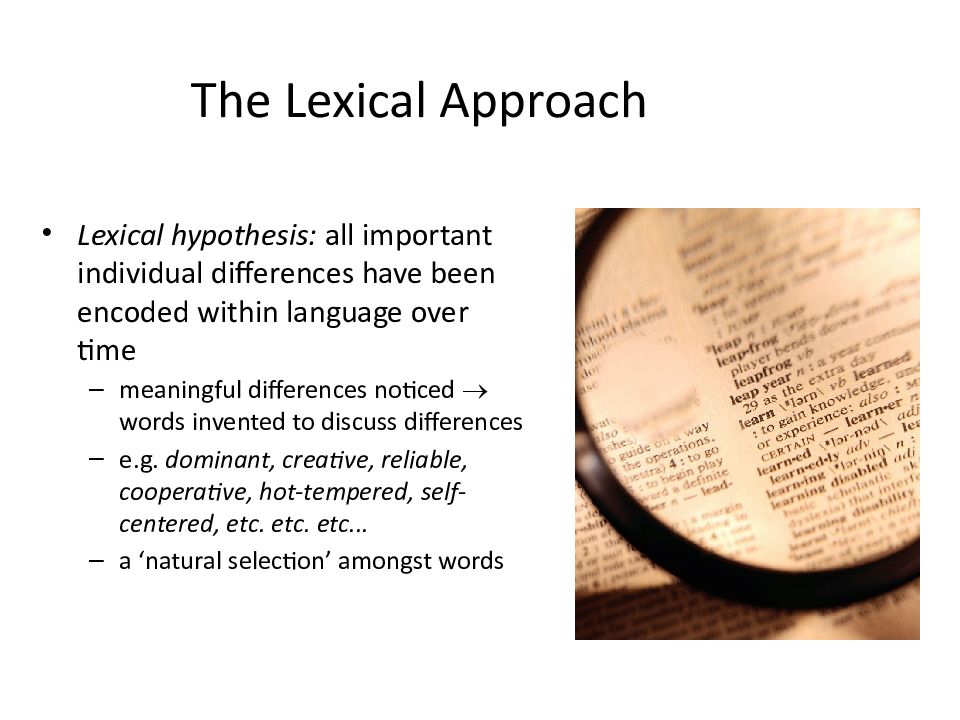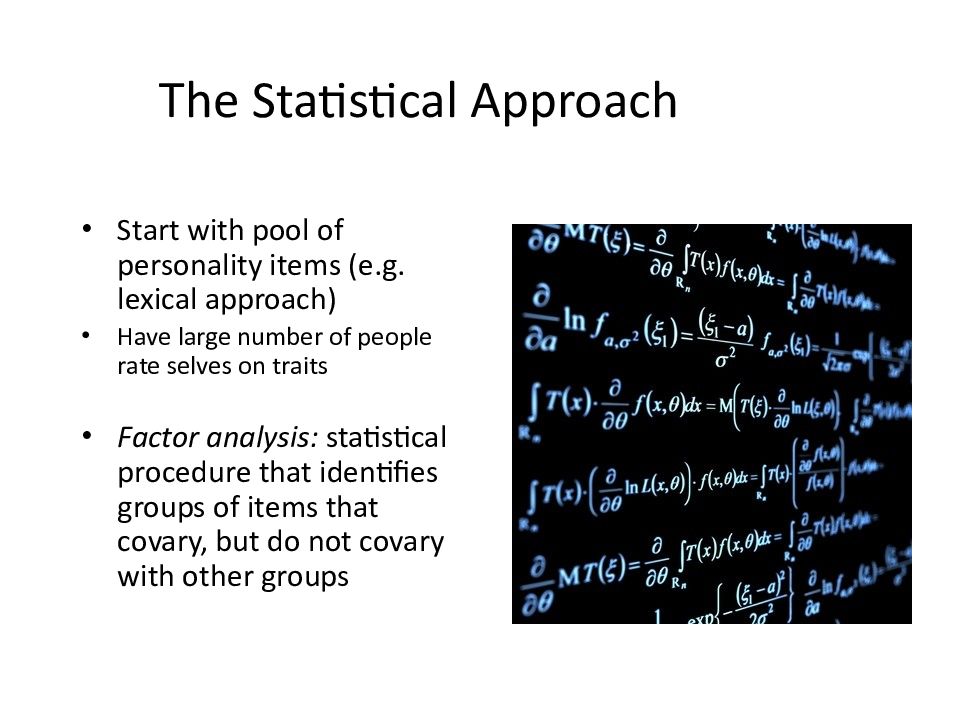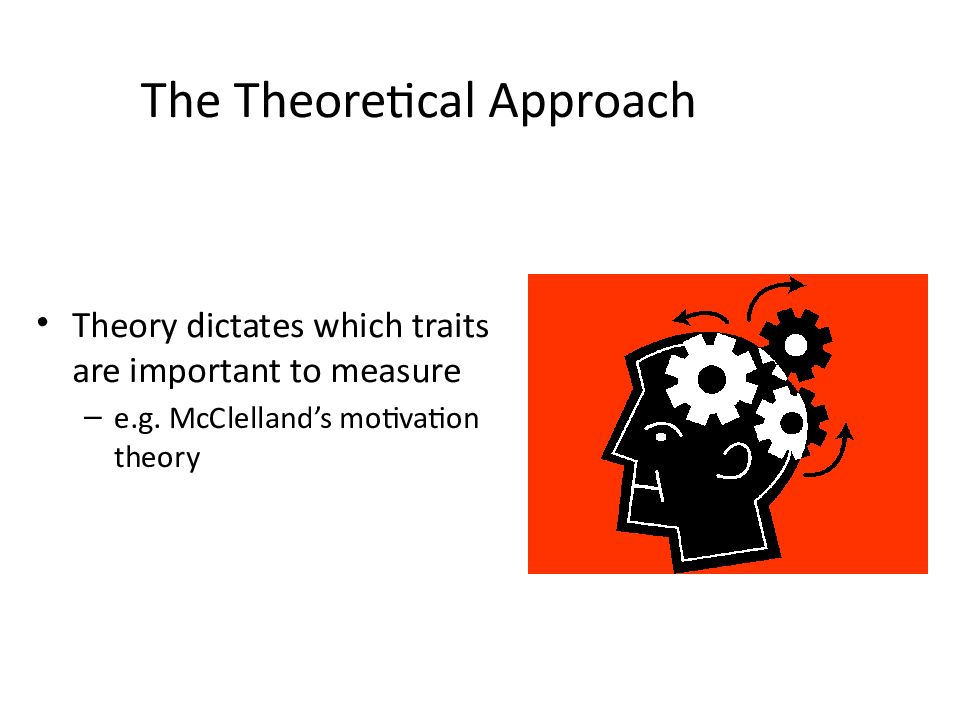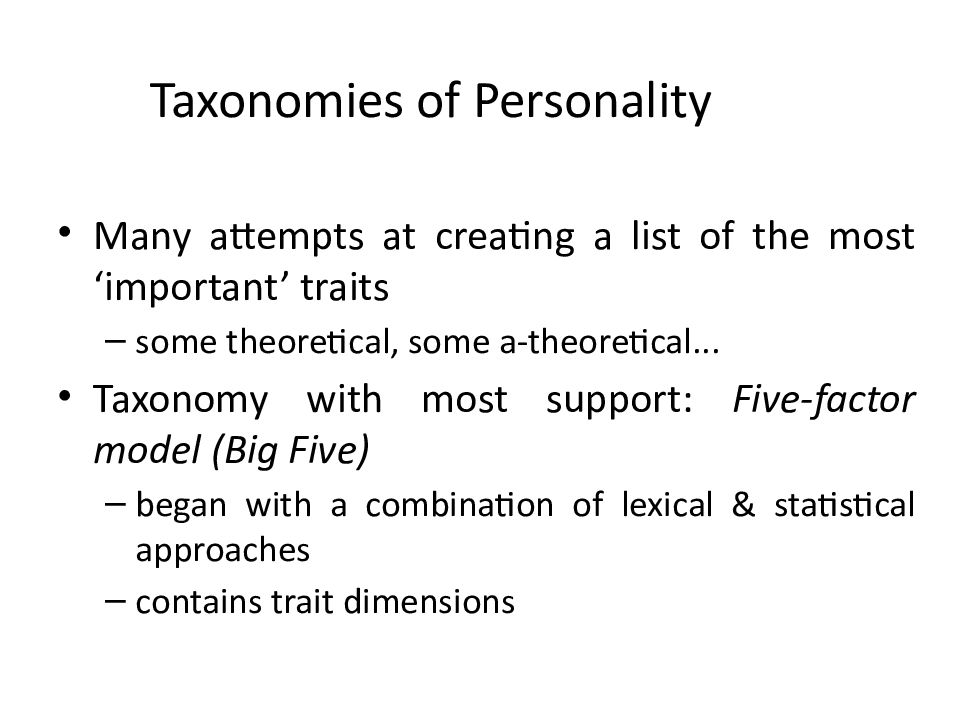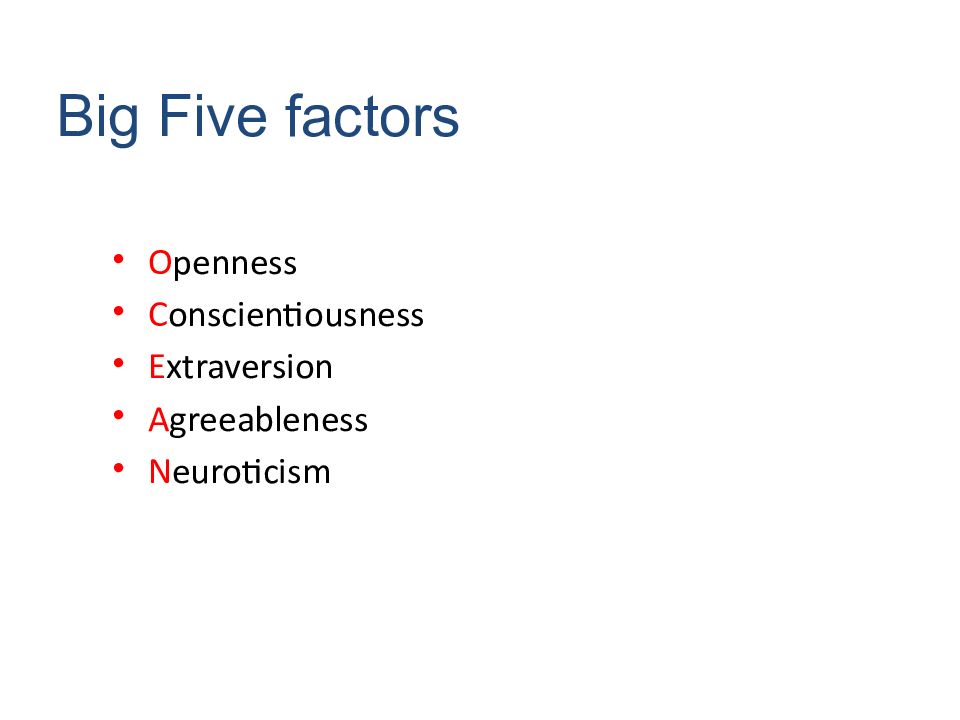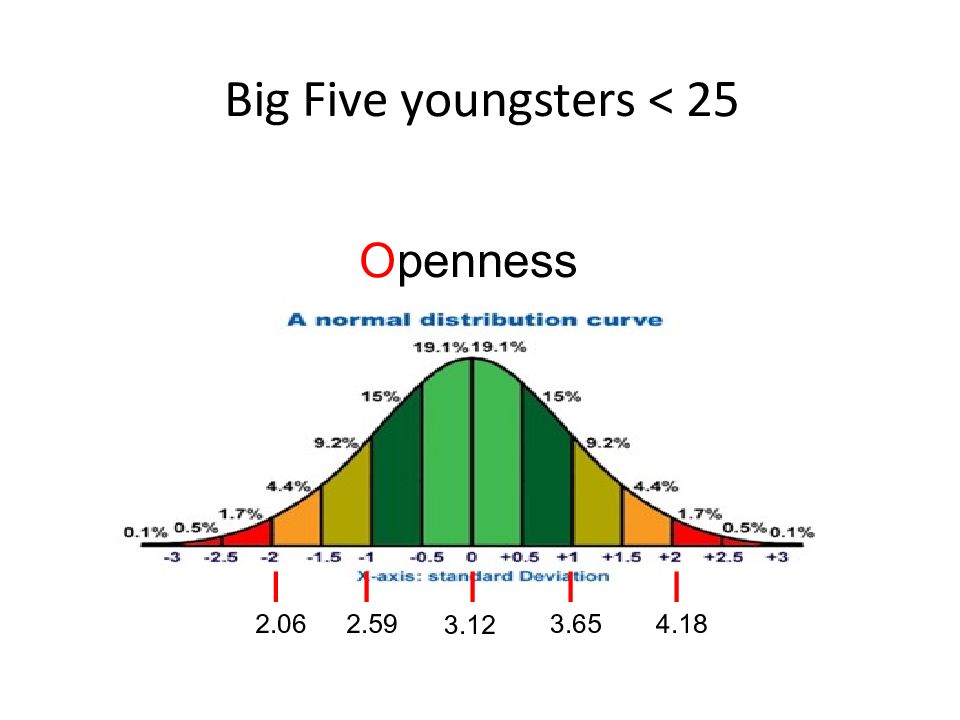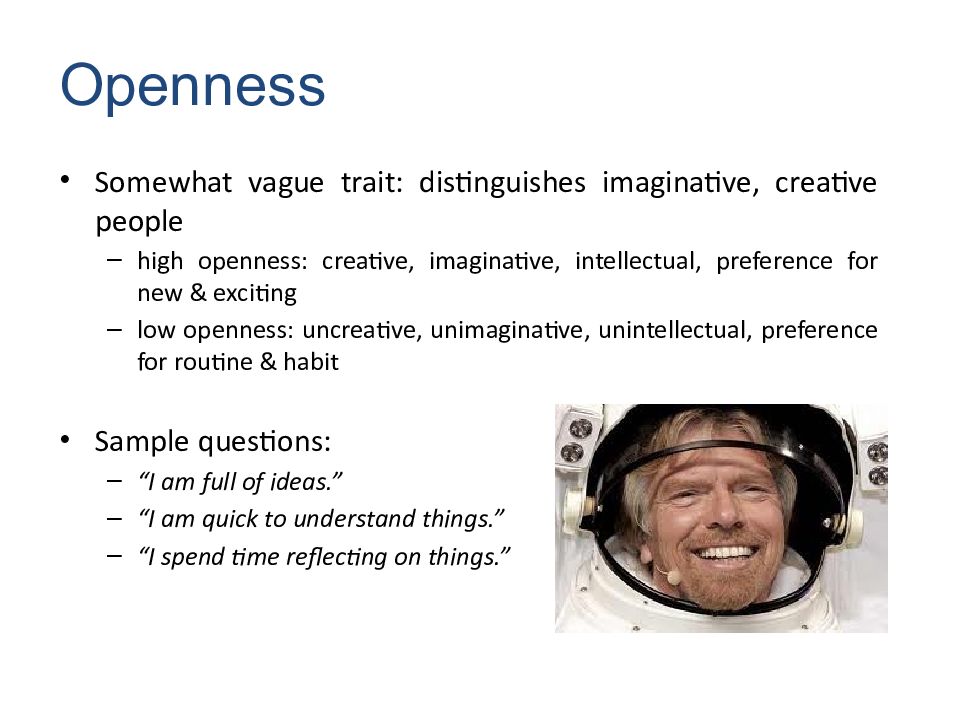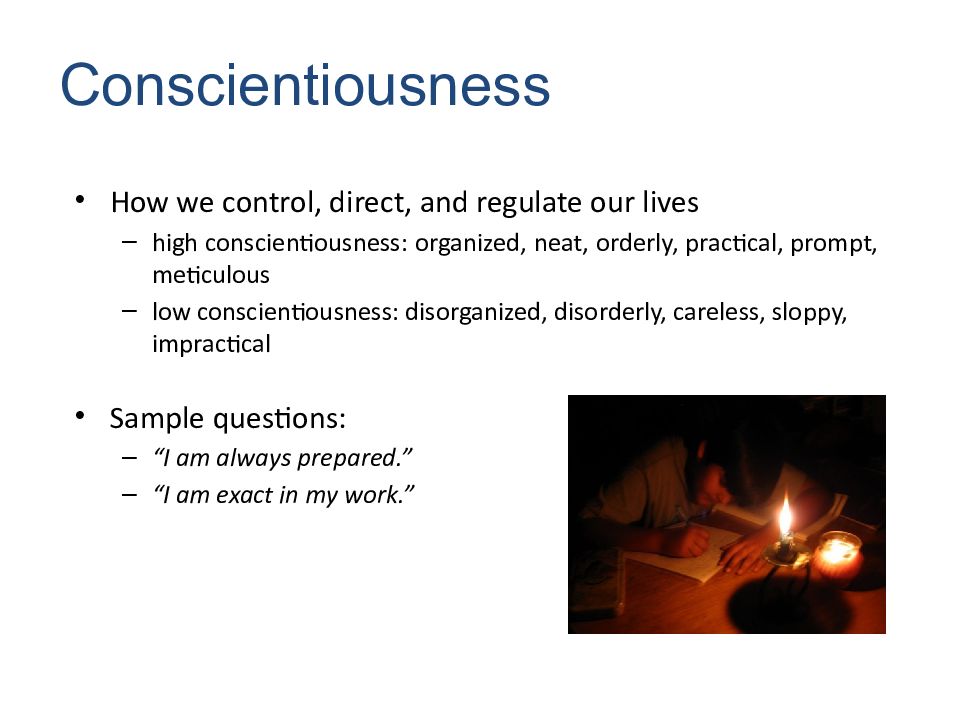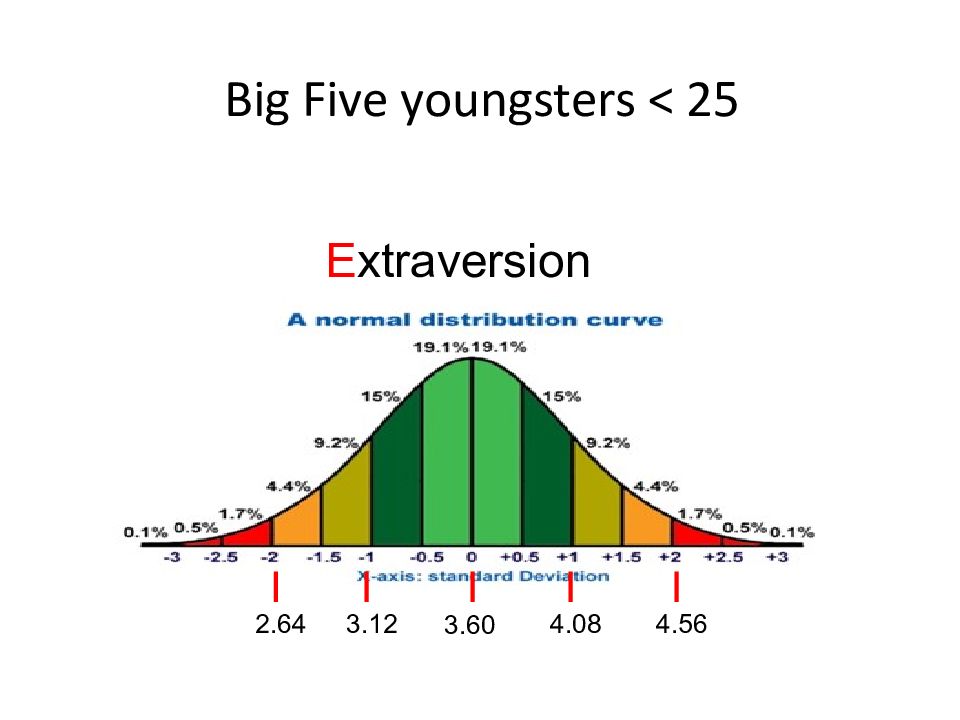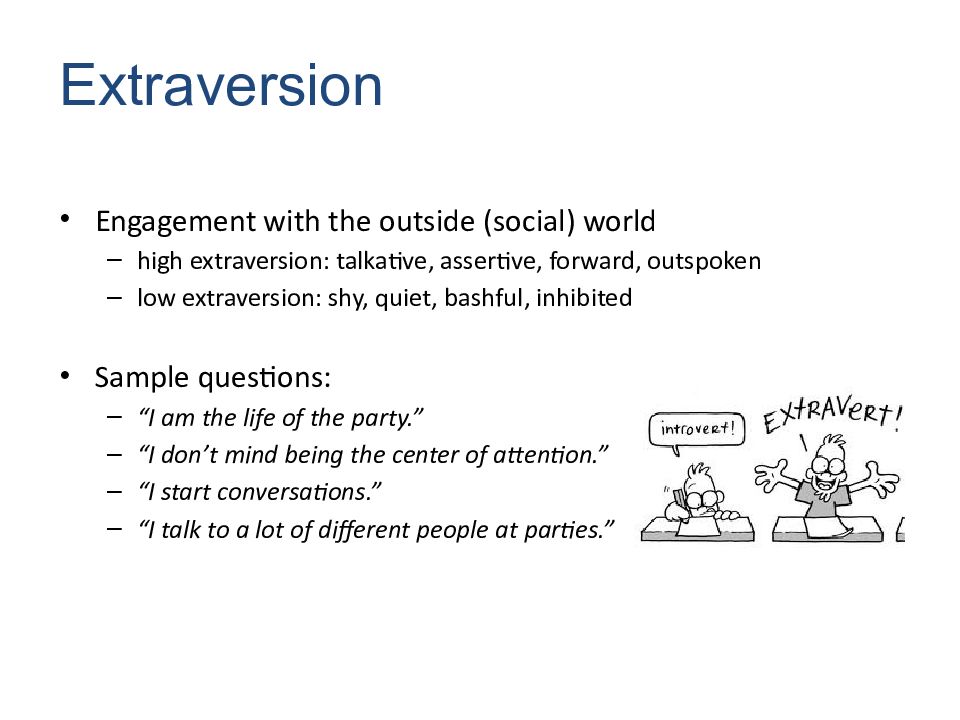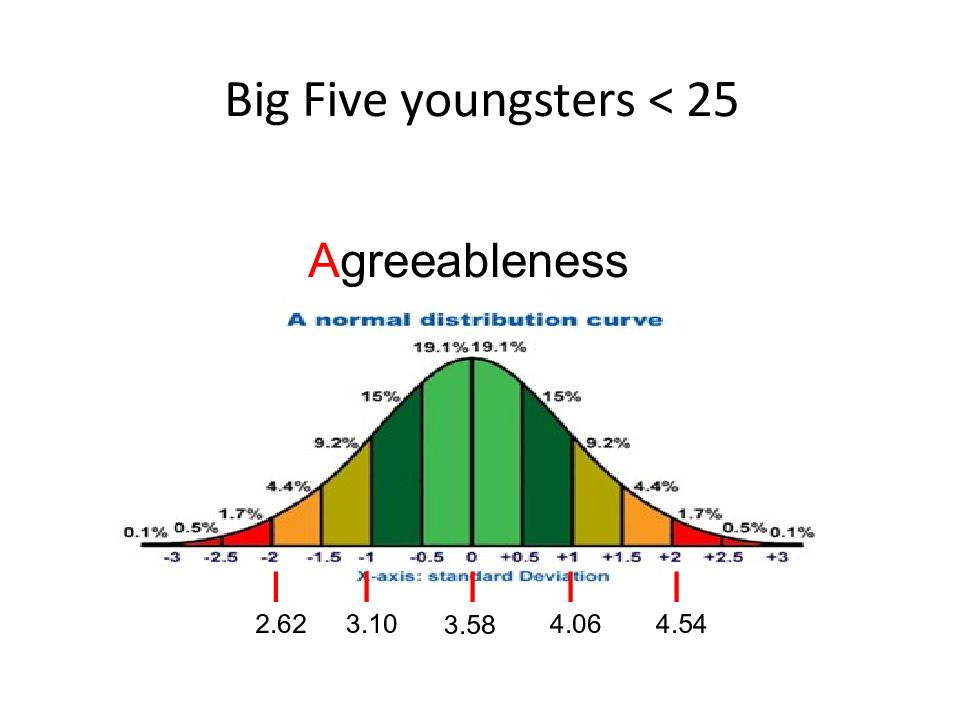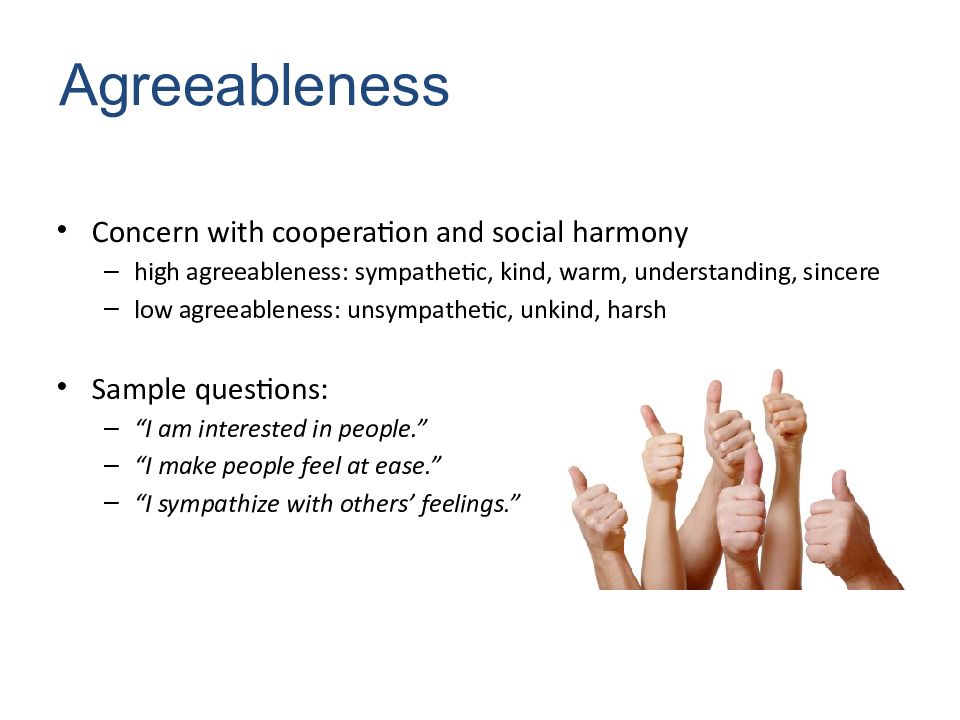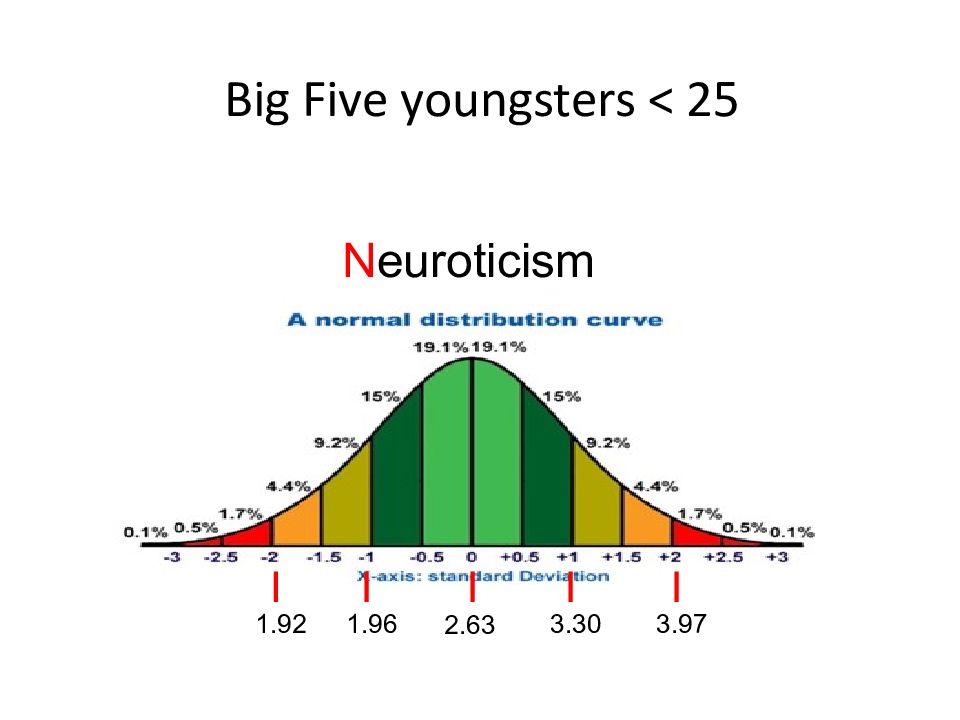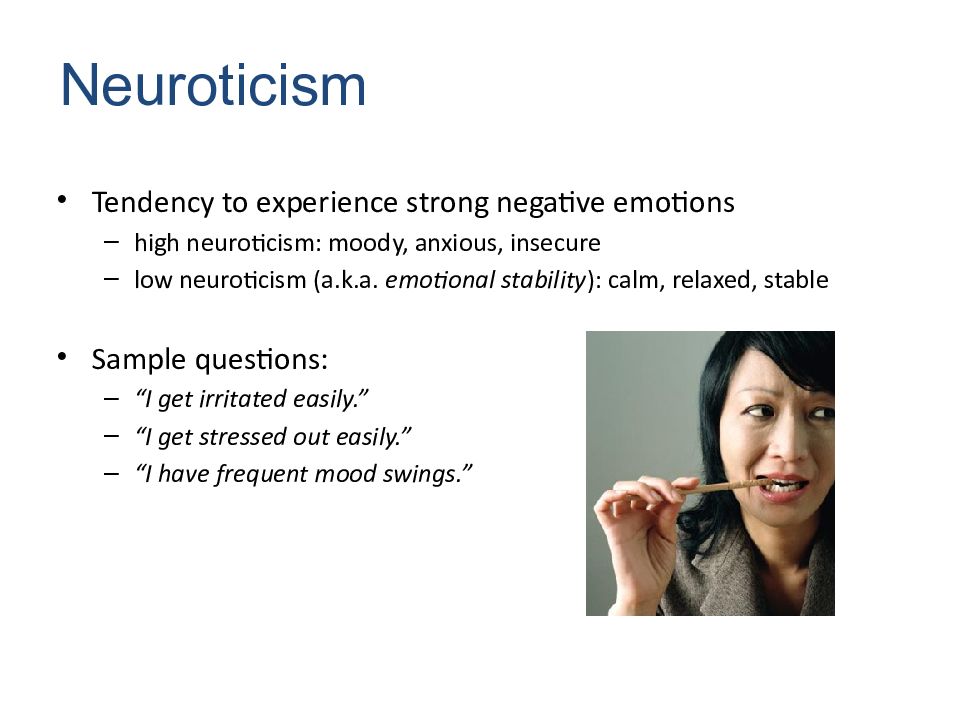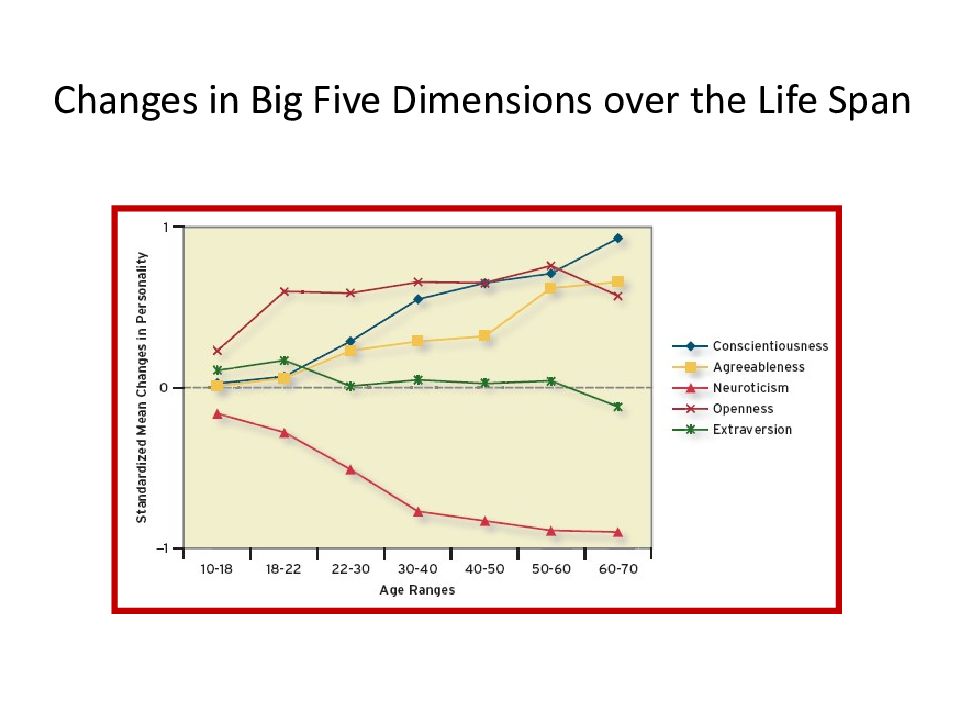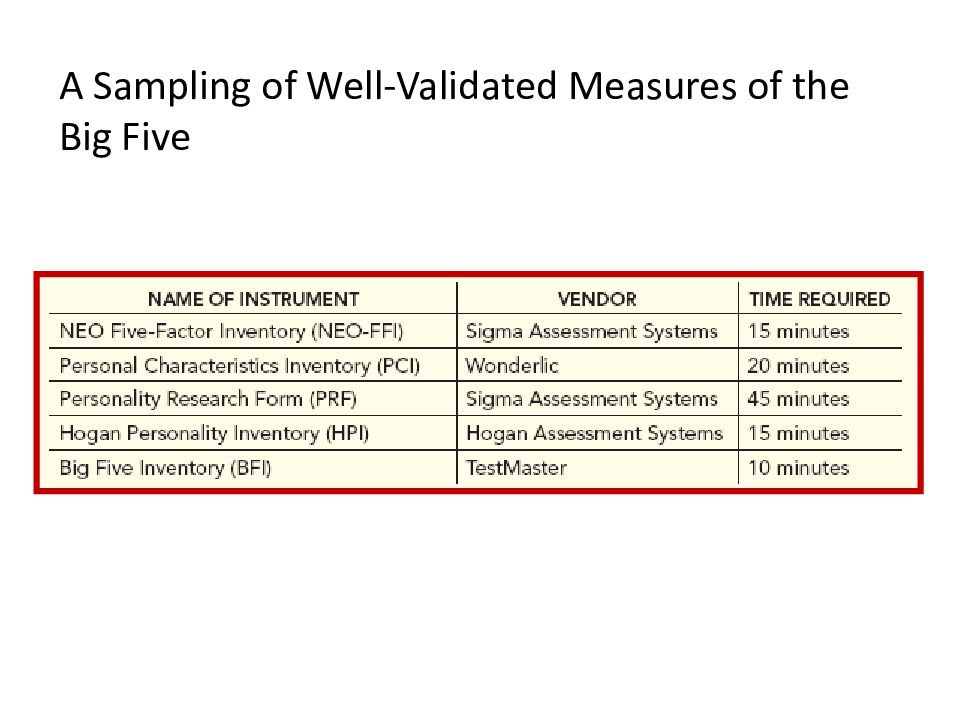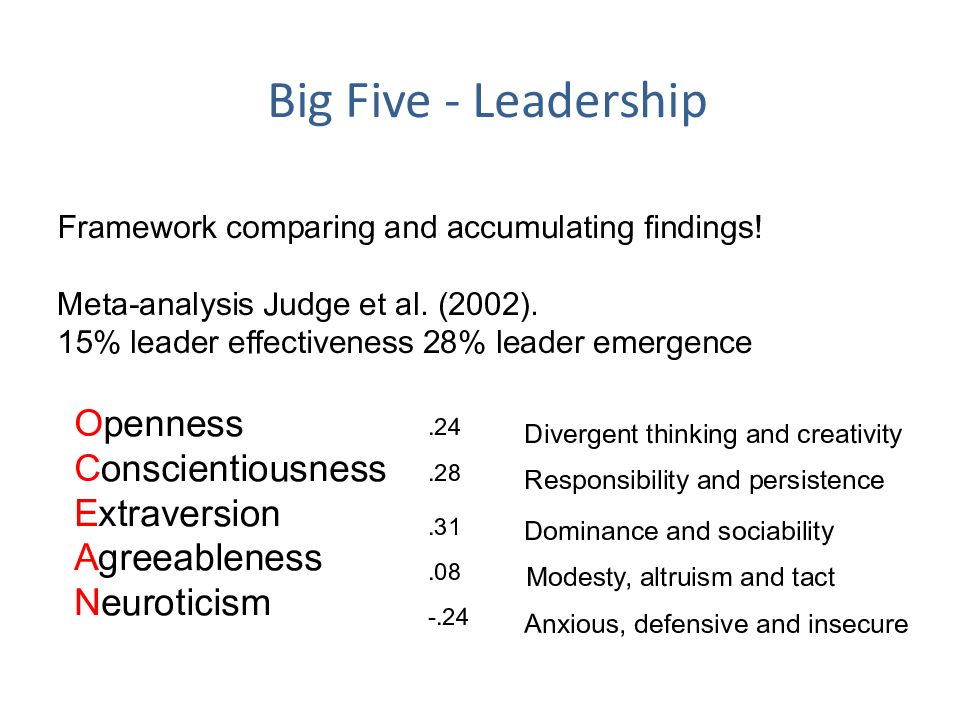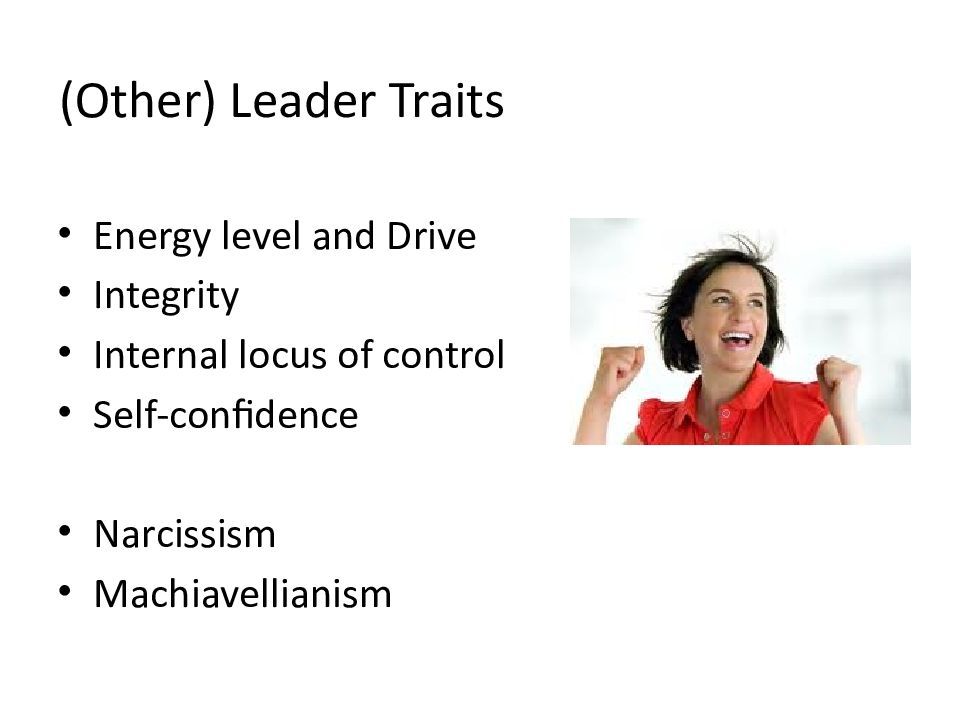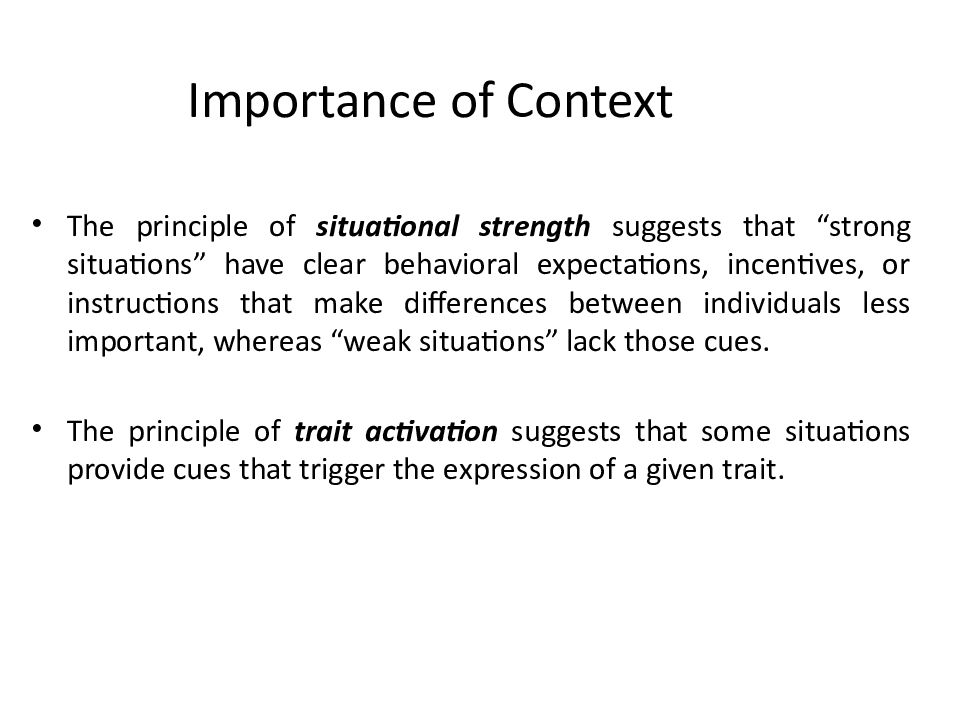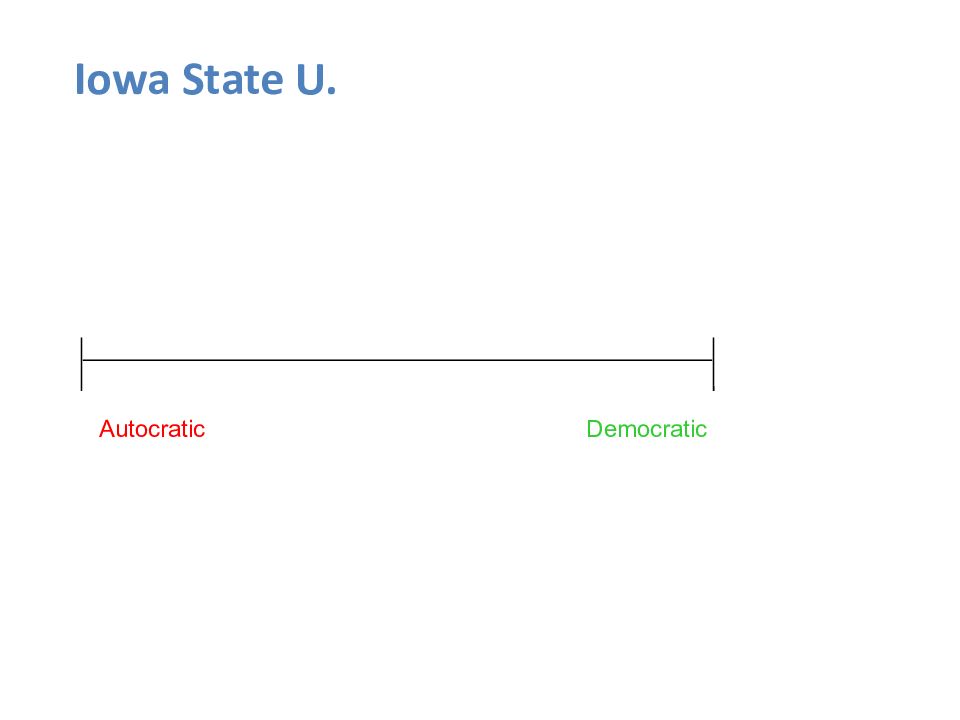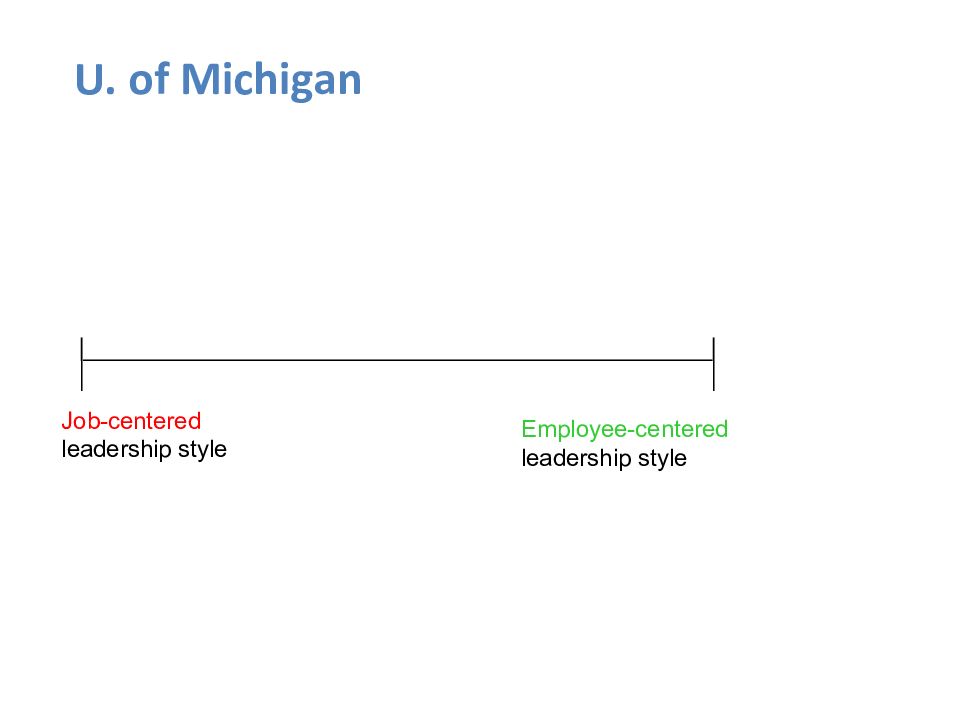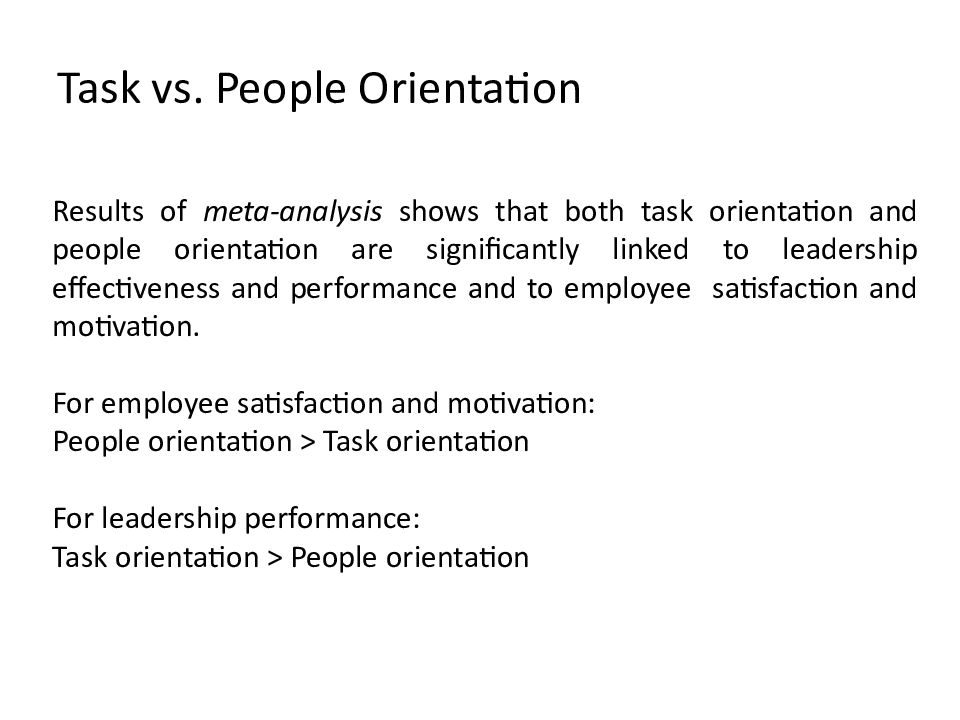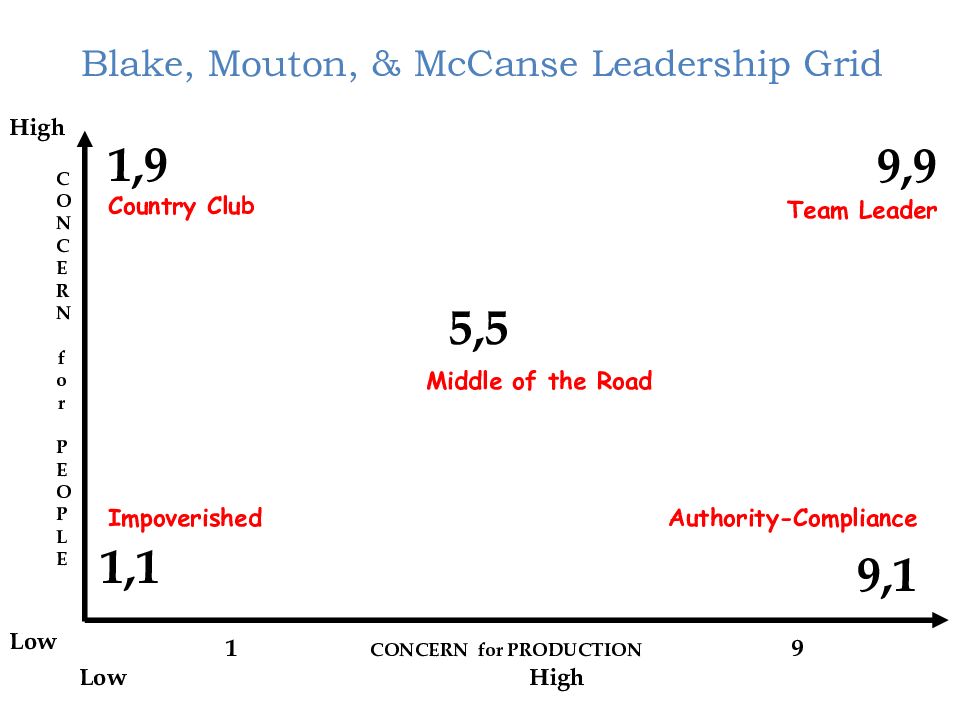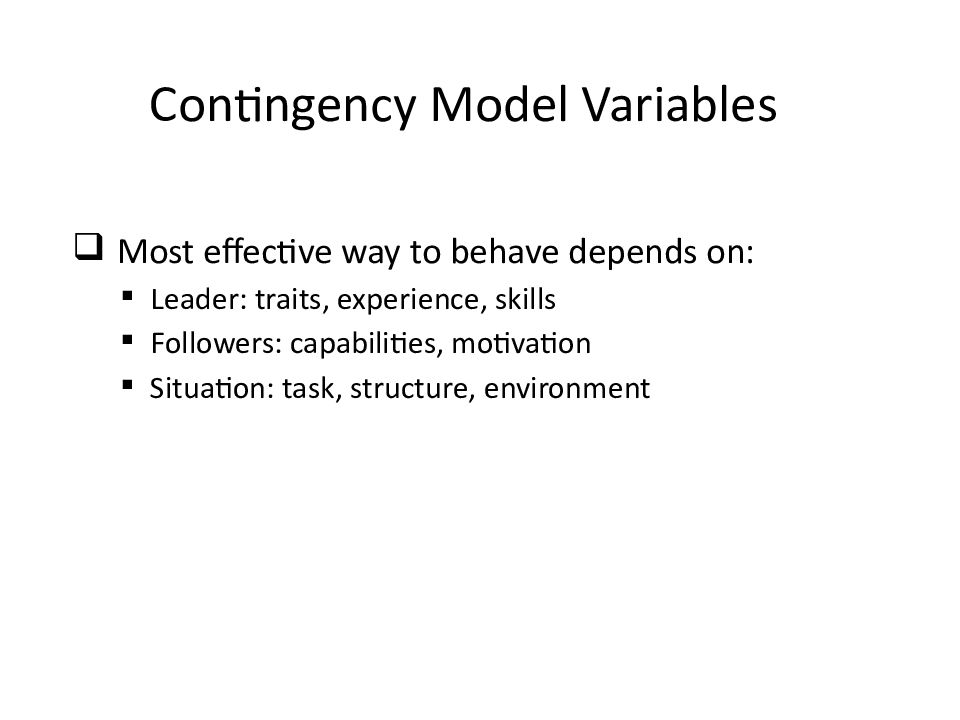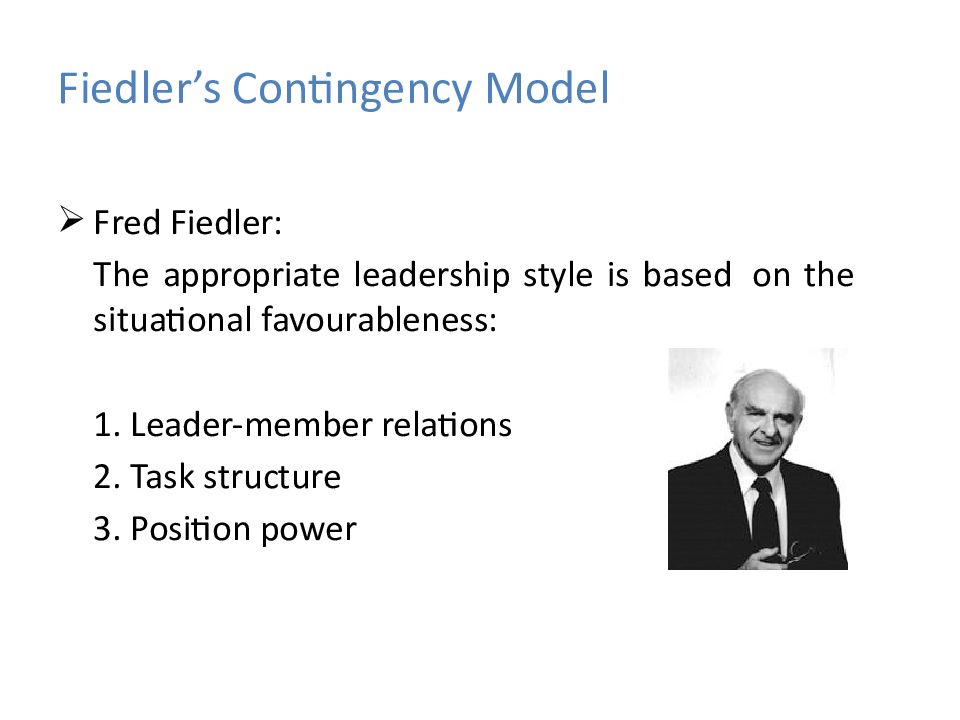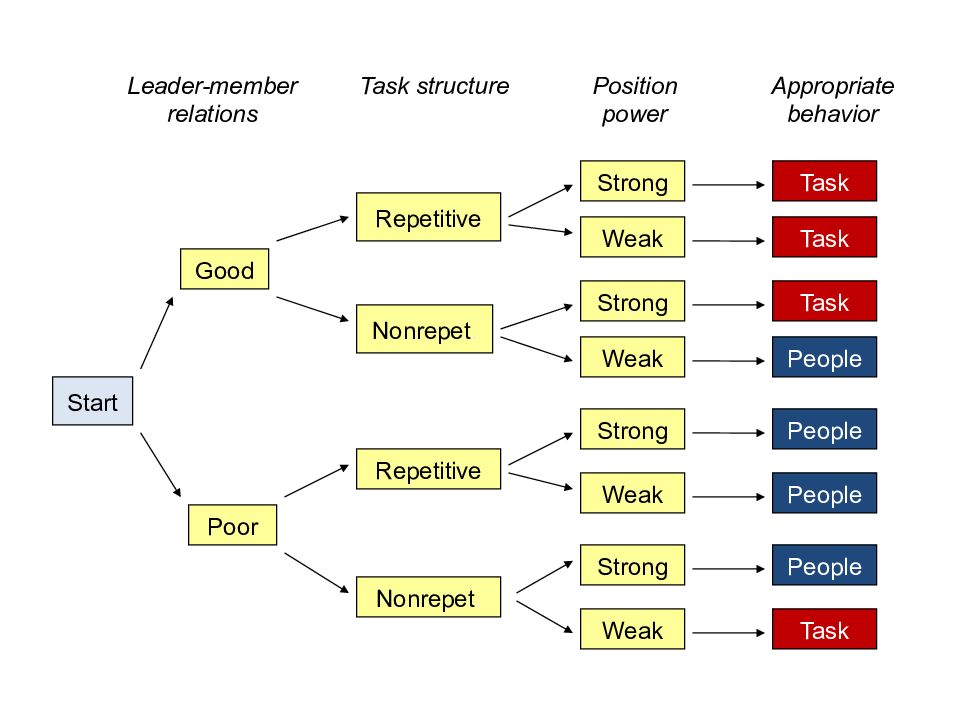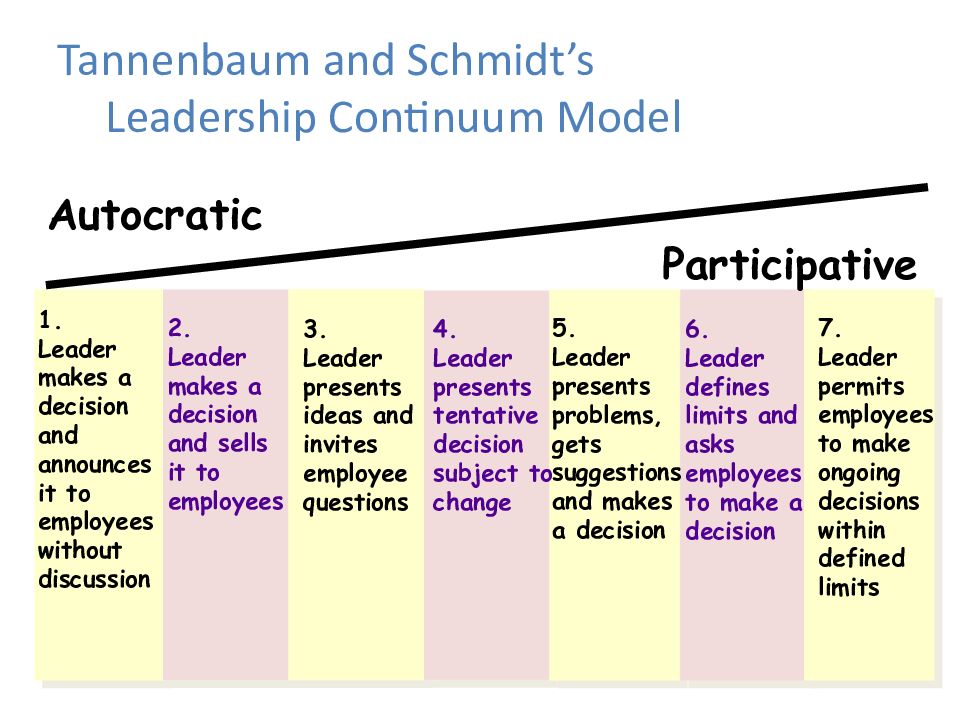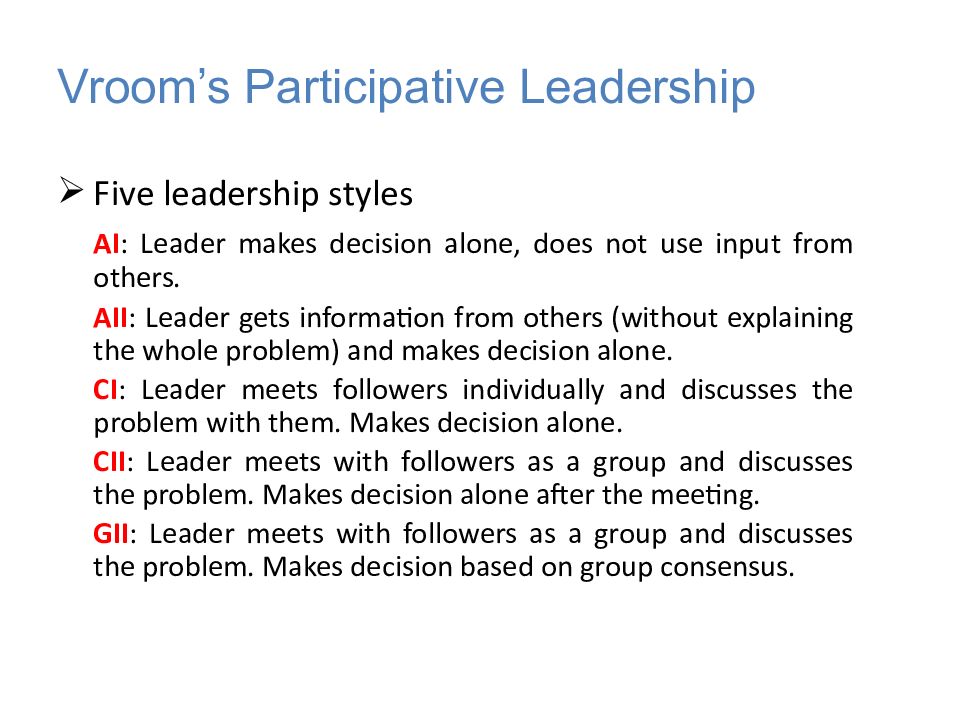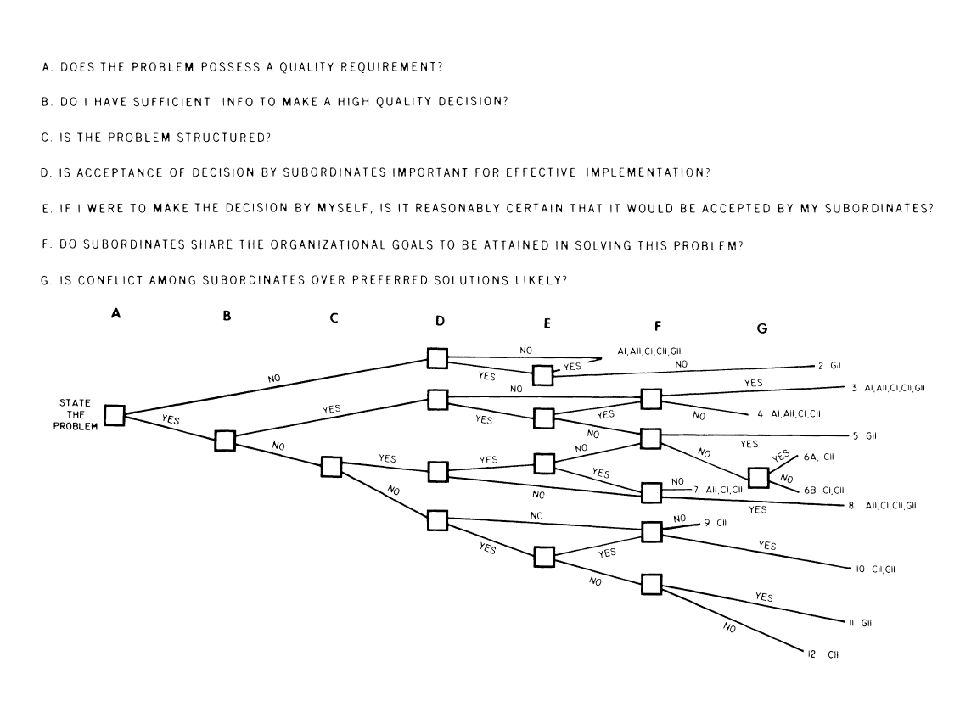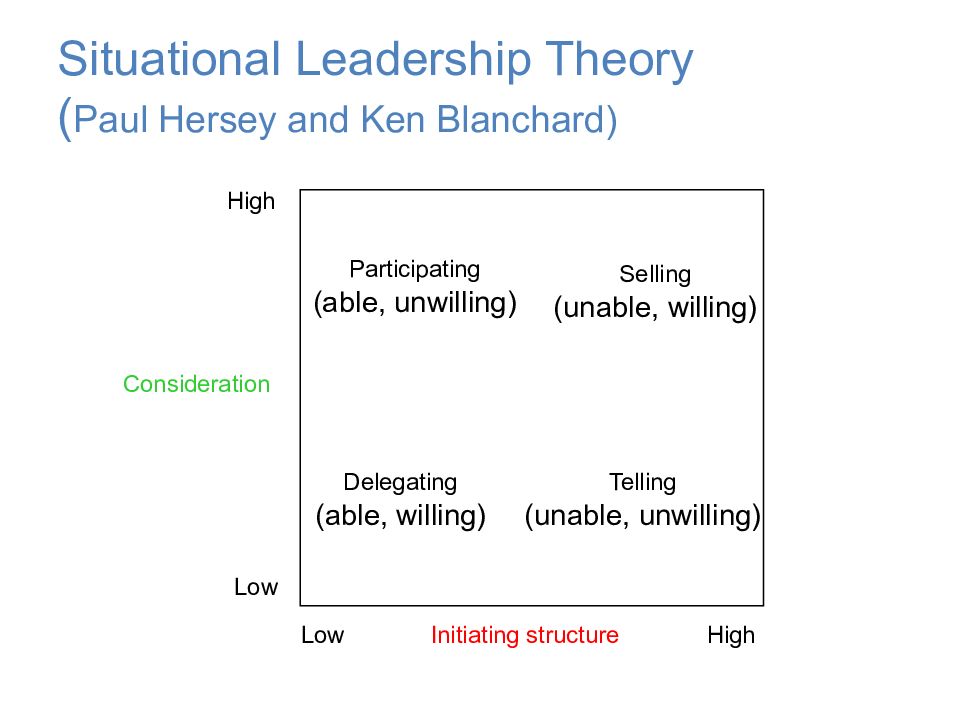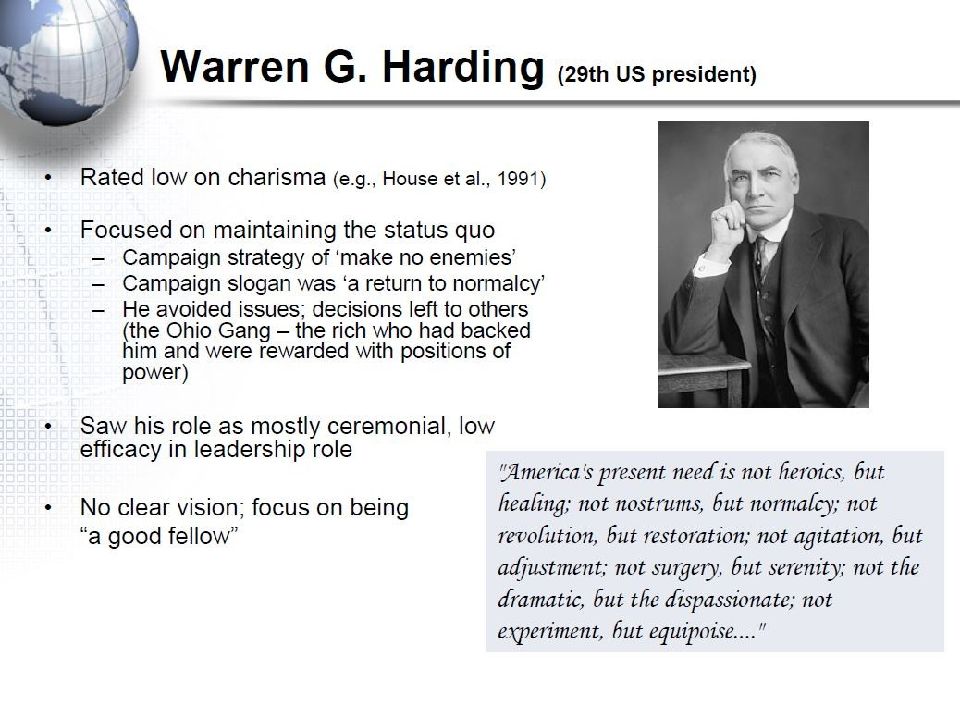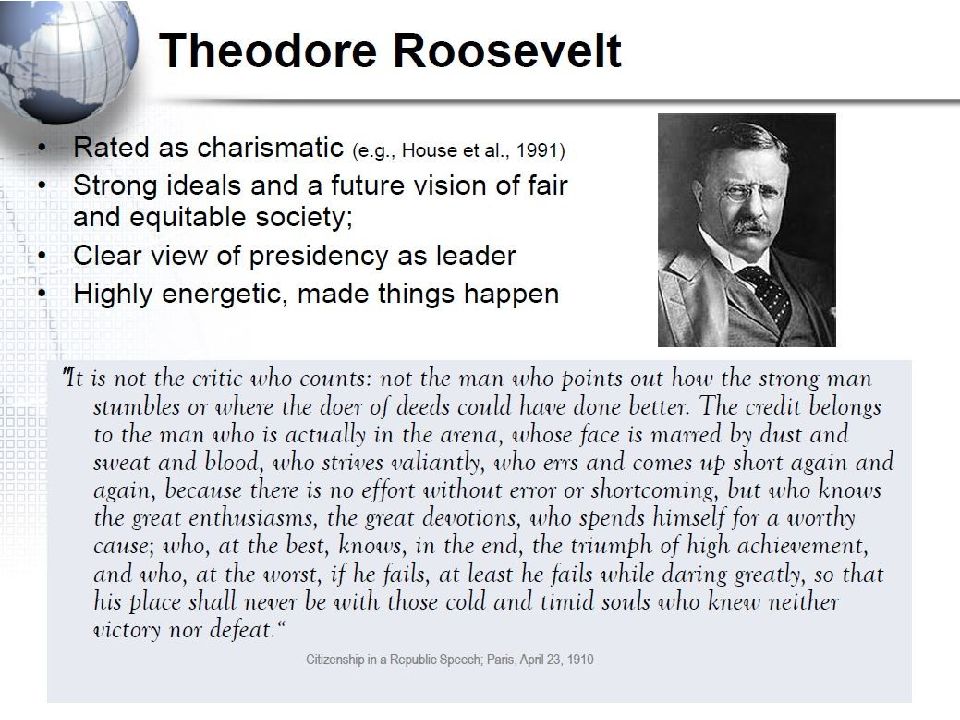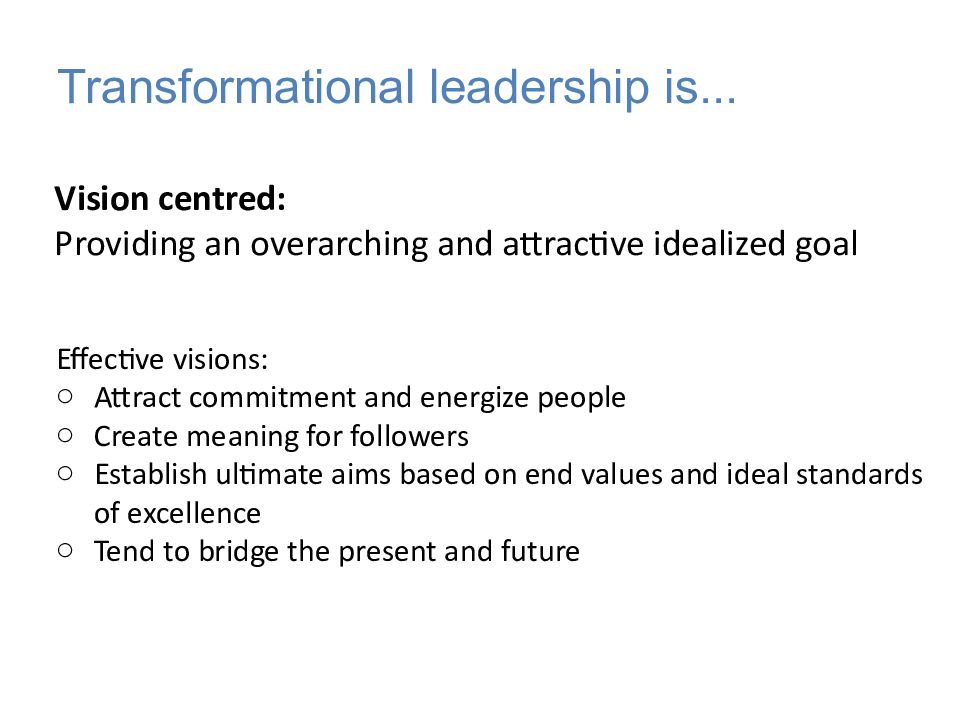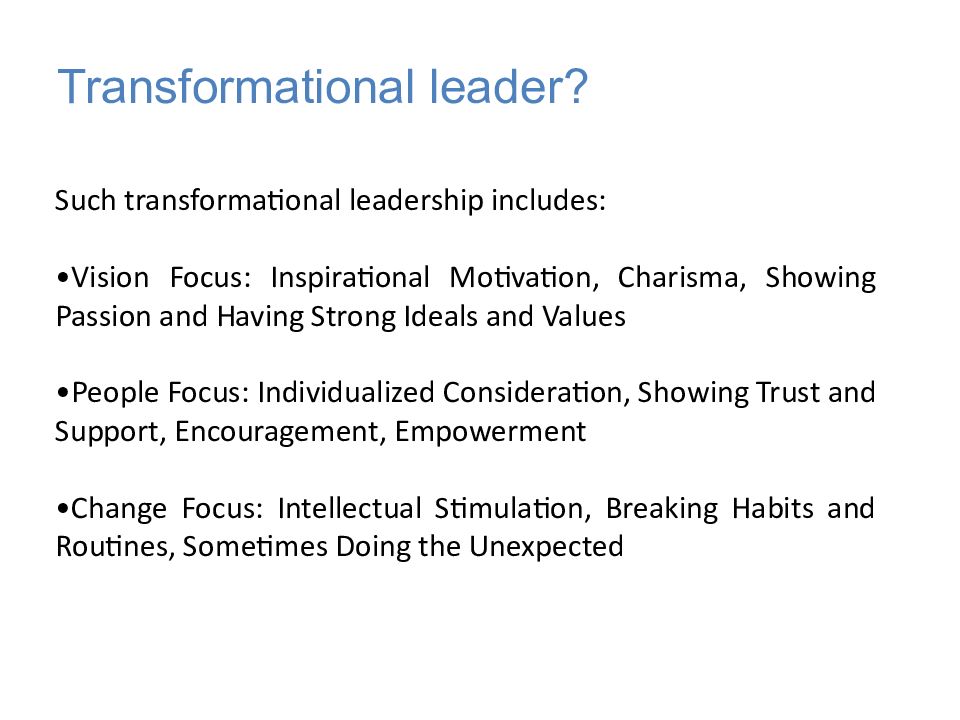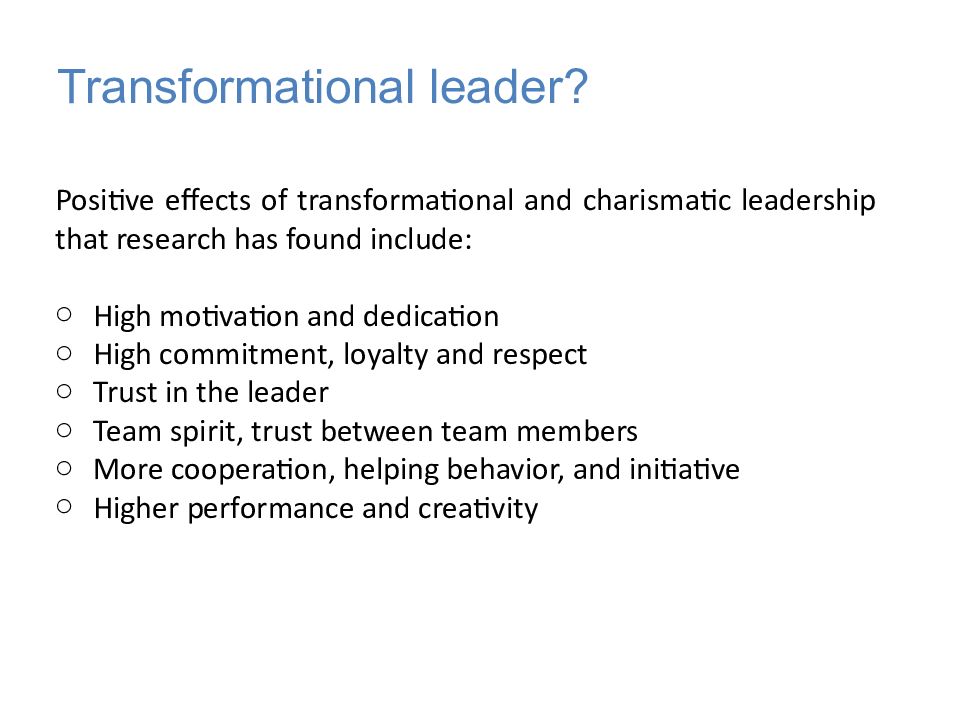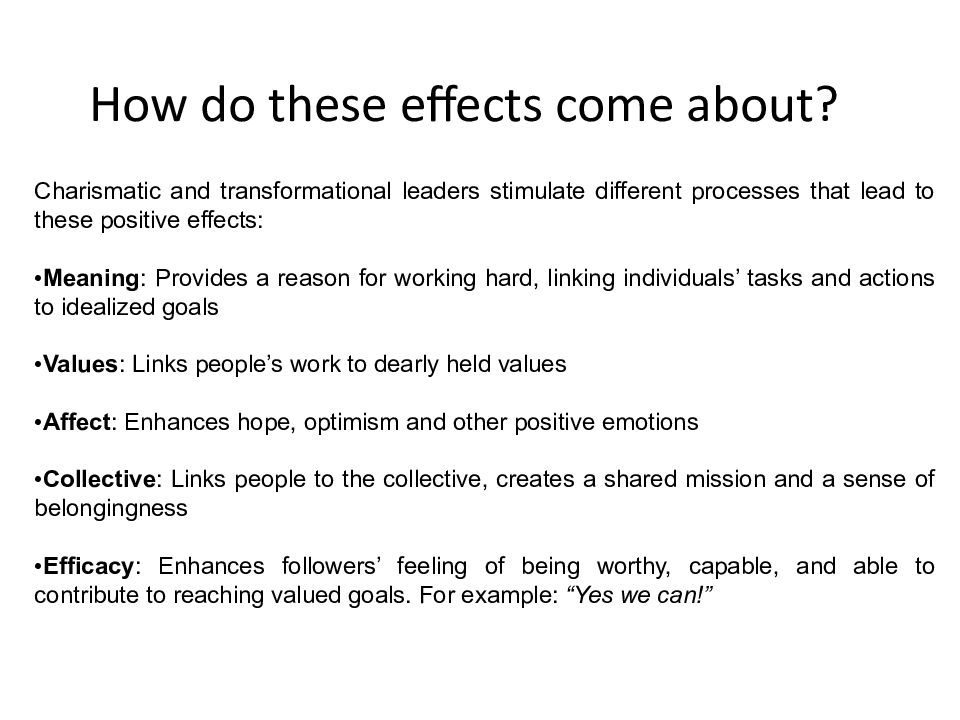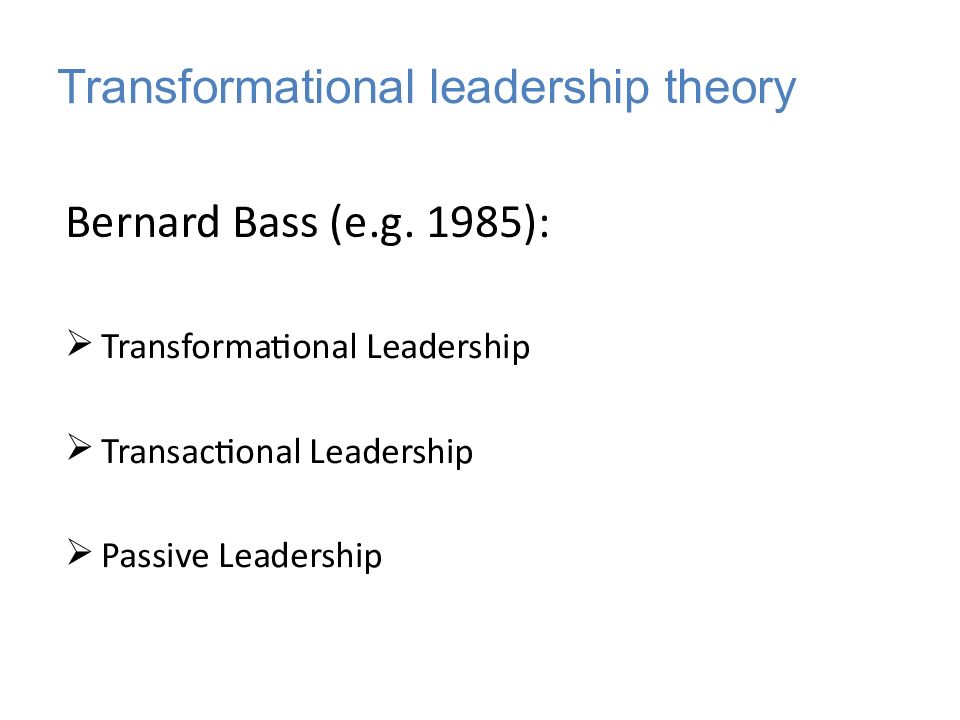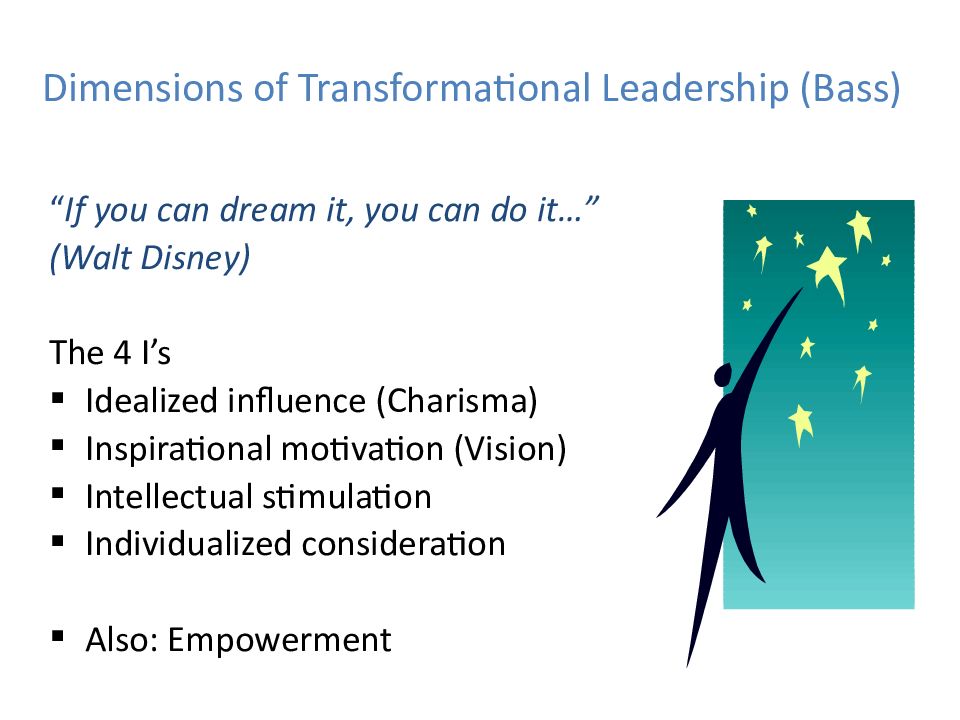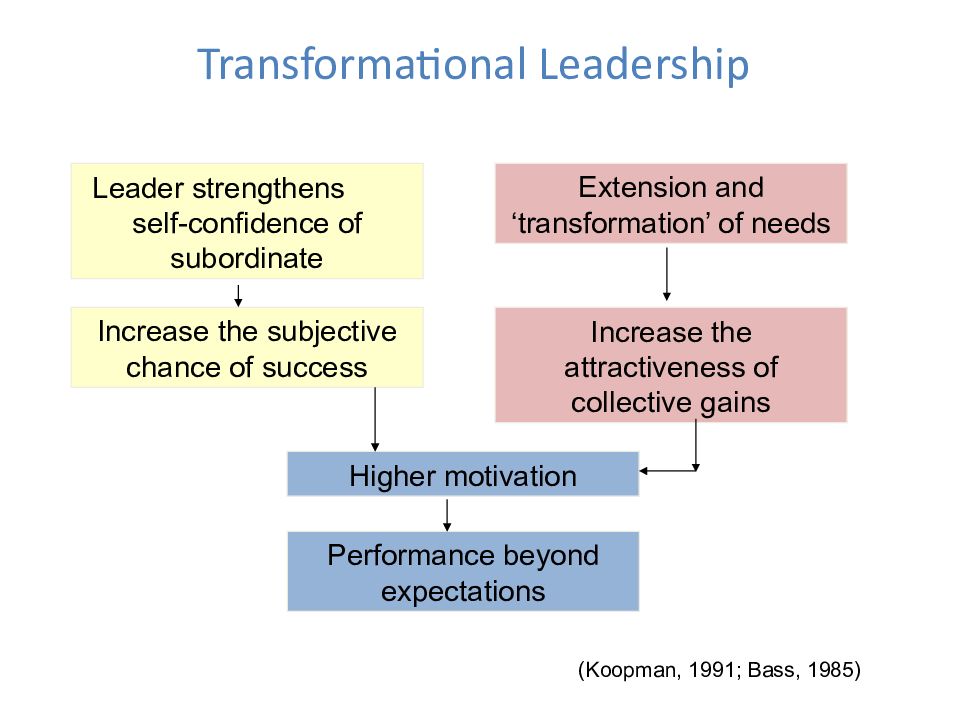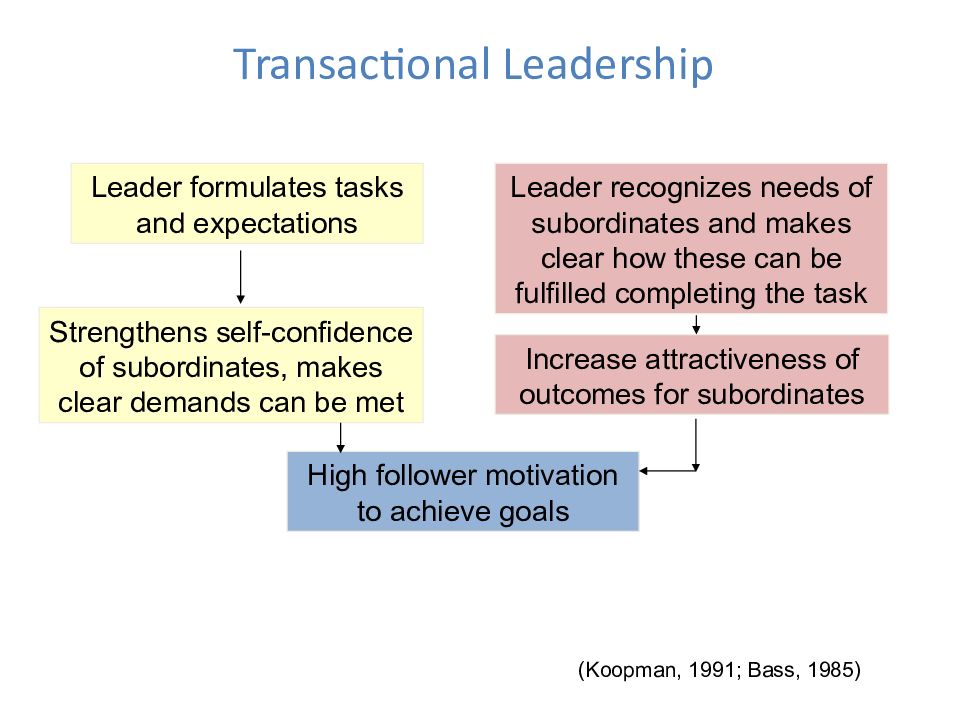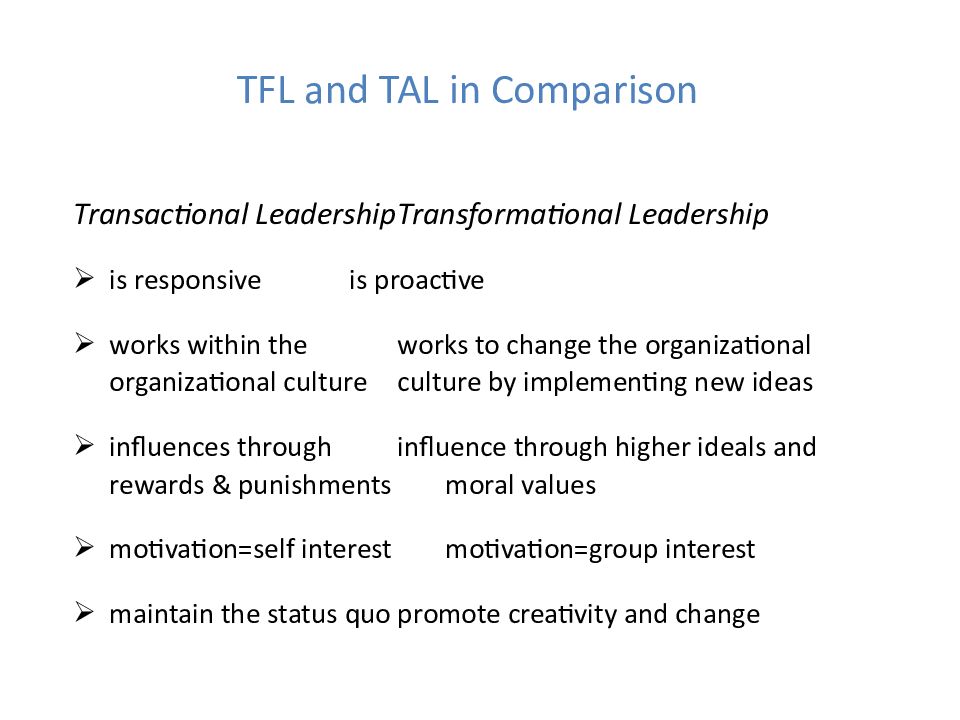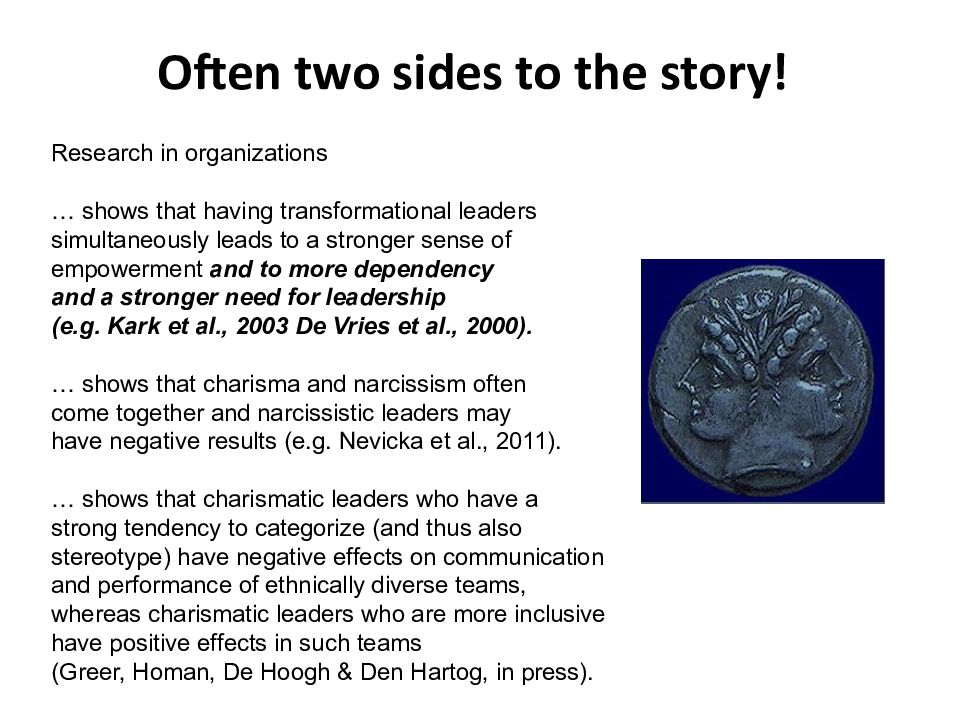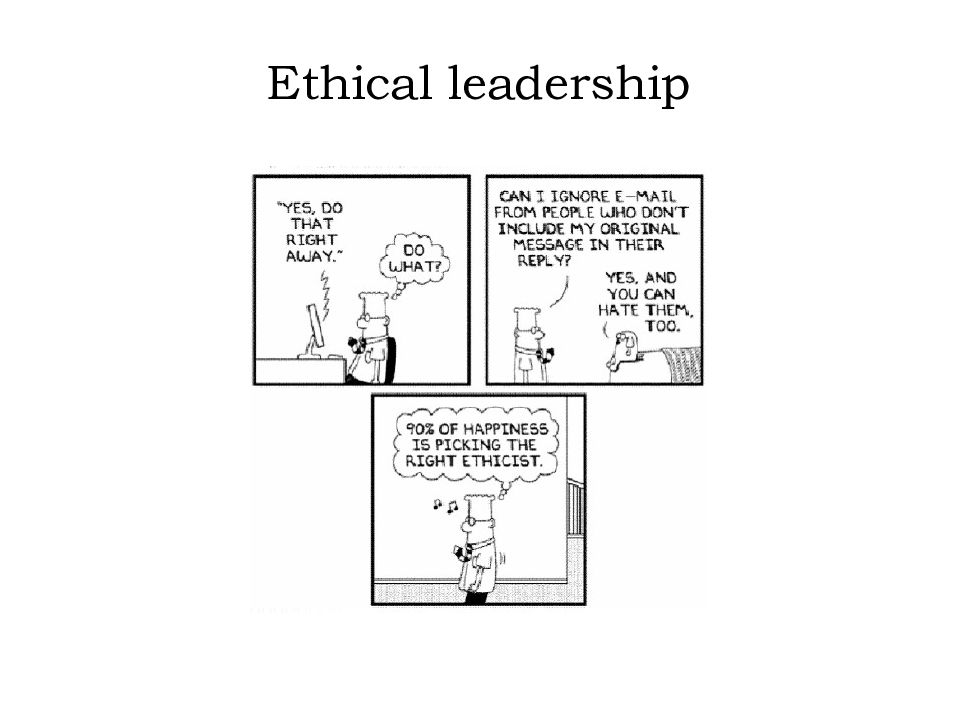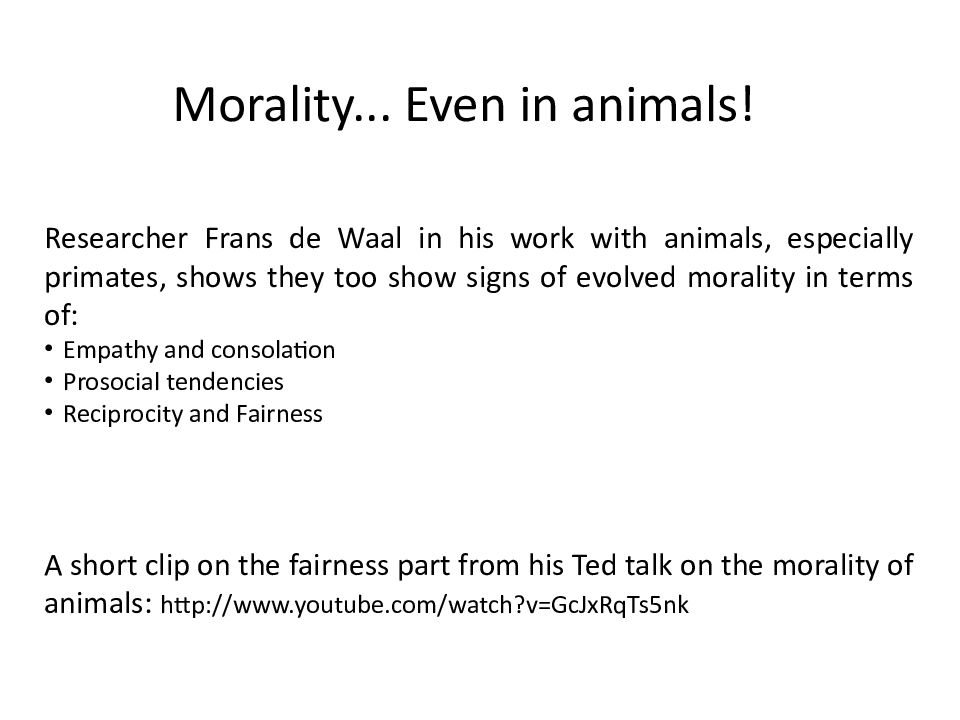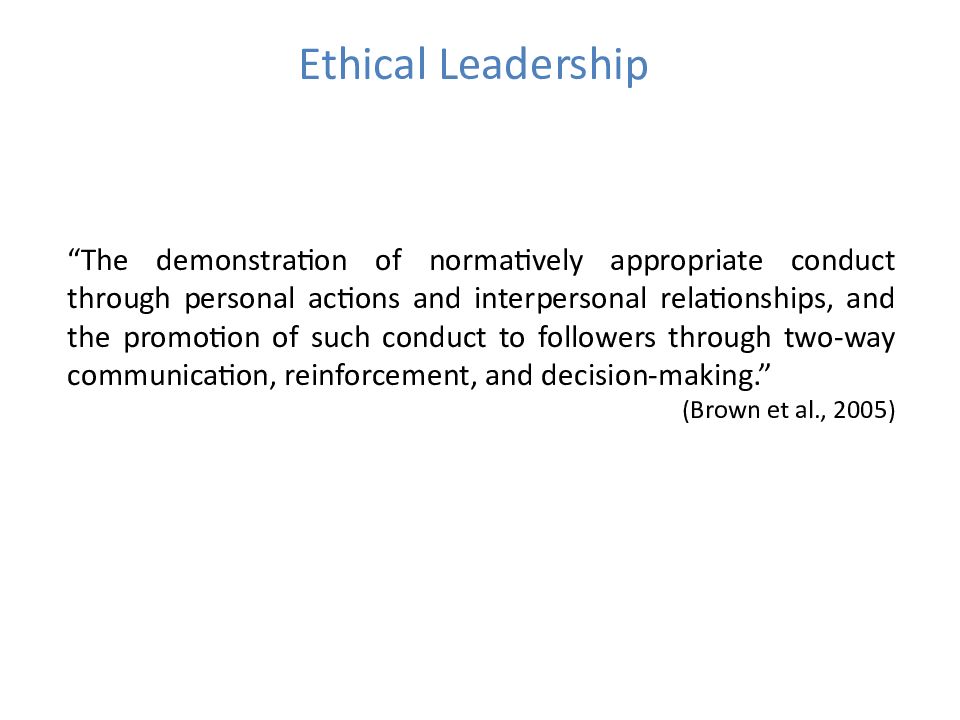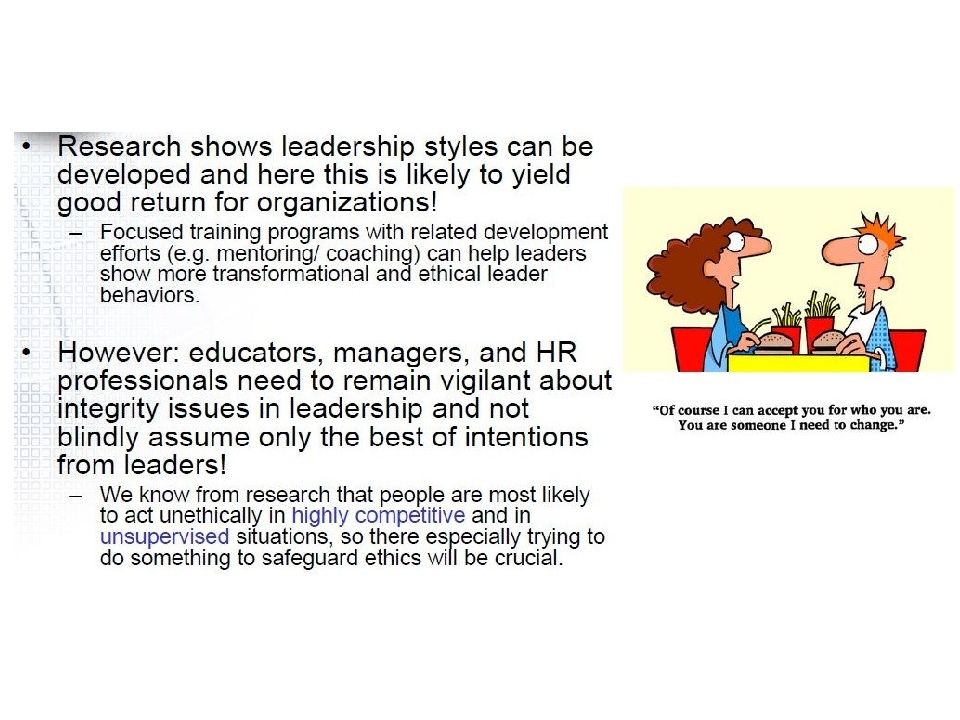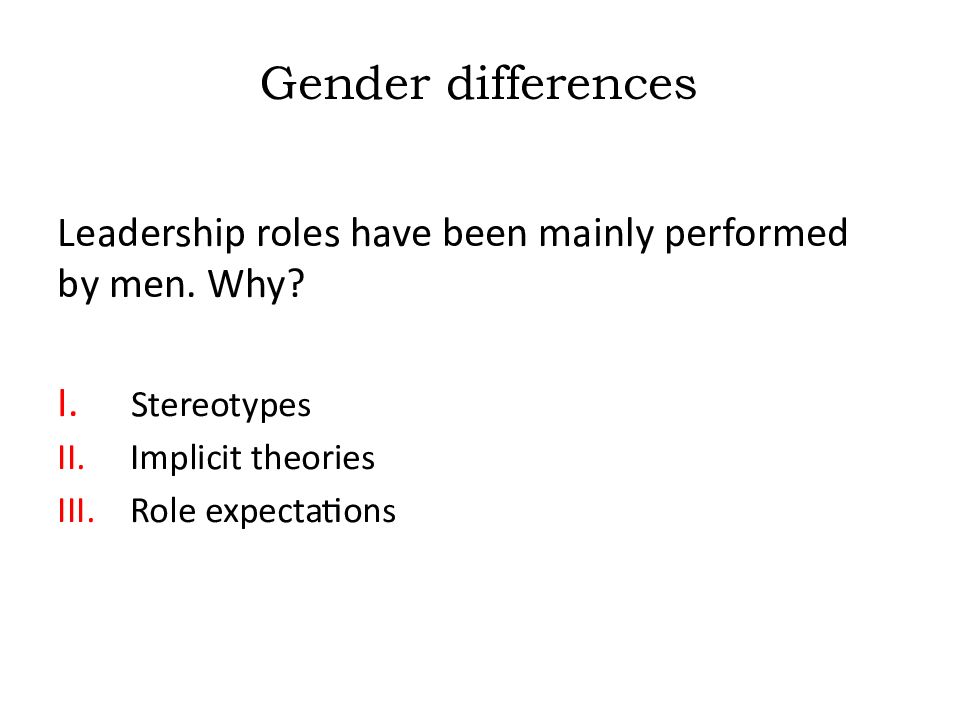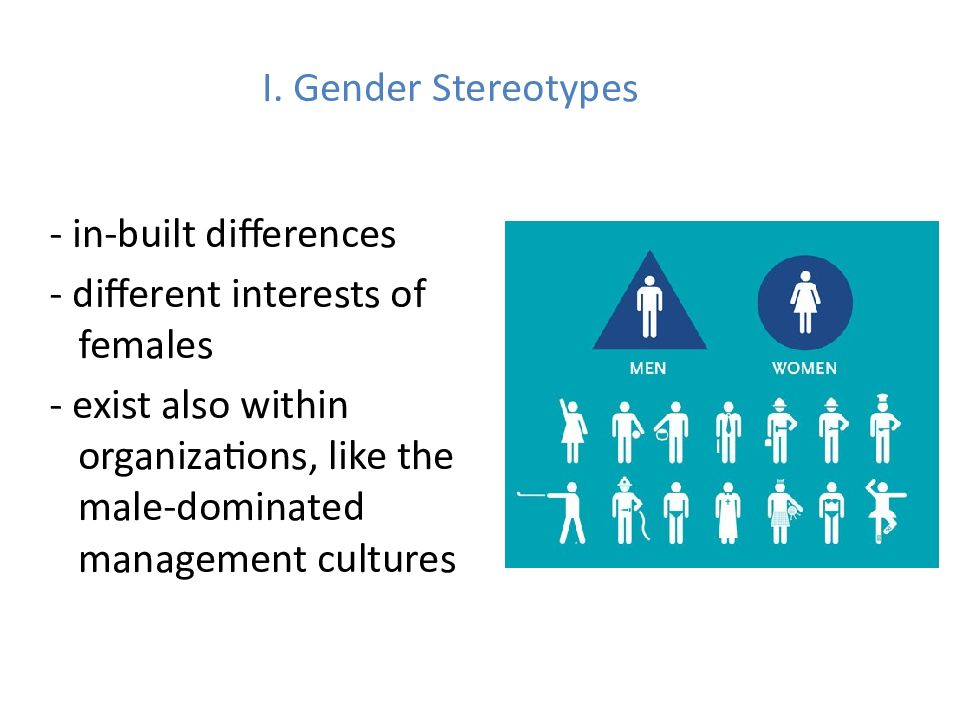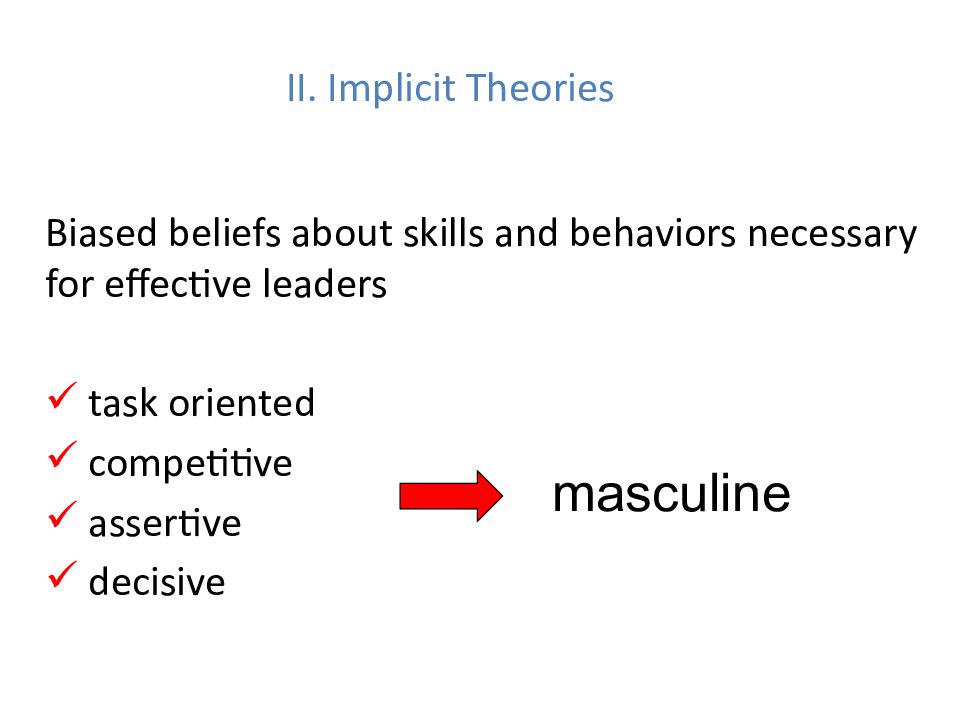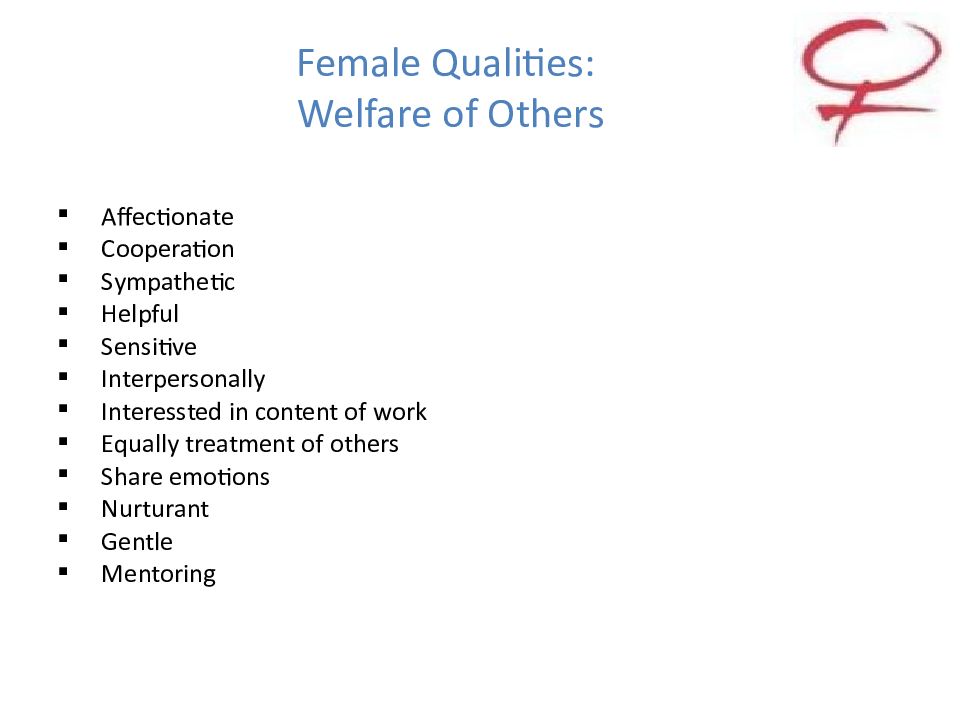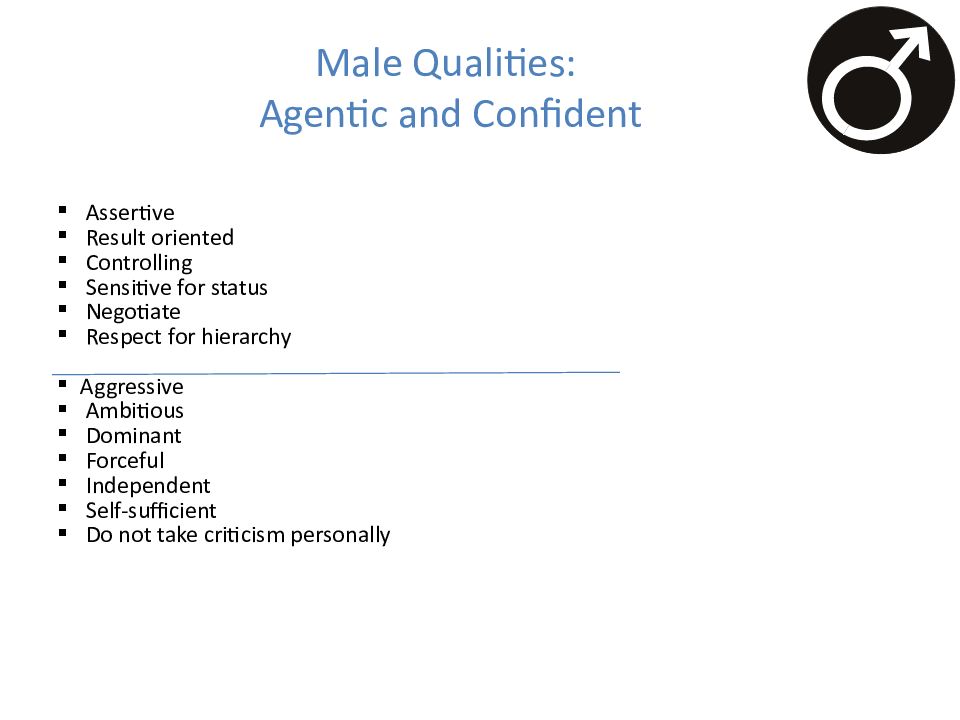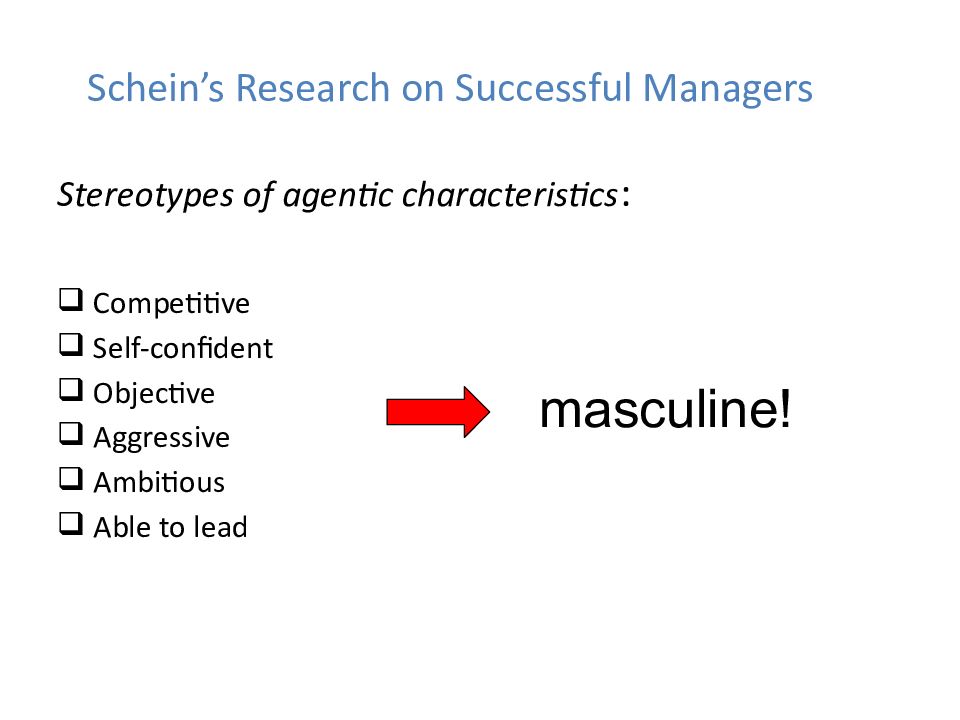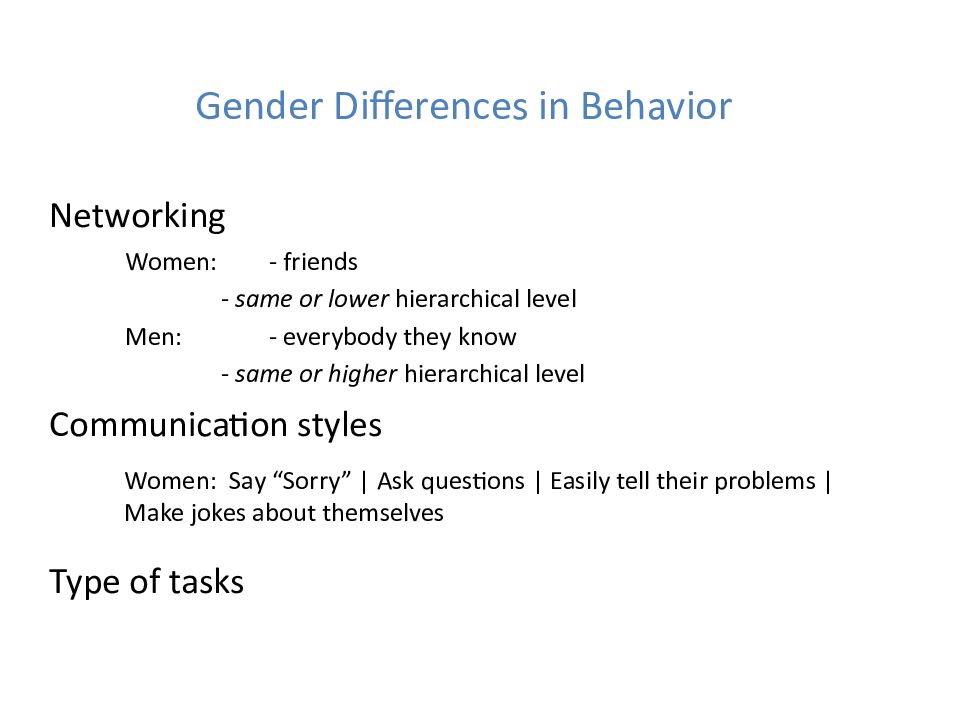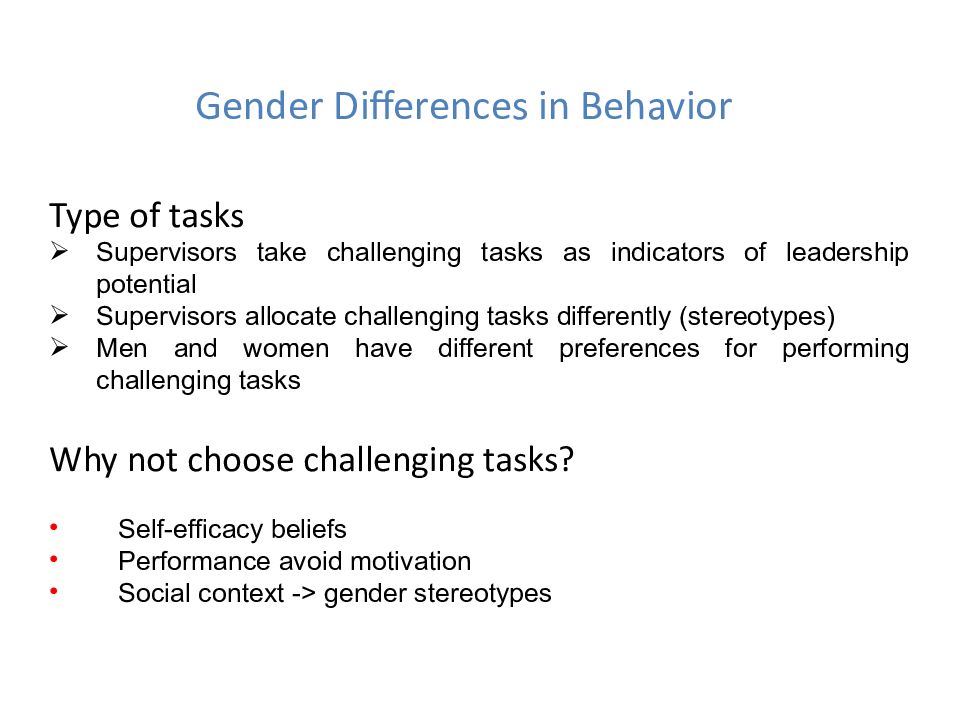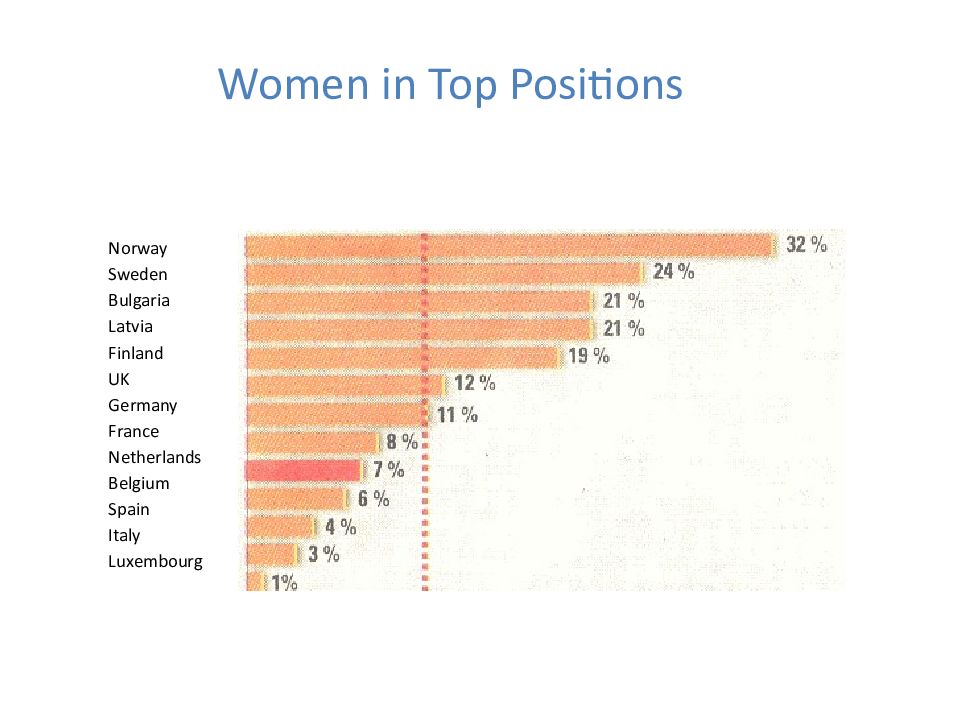Слайд 3: Leadership: An important issue for managers
Average managers Effective managers Successful managers 19% 20% 32% 29% 13% 28% 11% 48% 19% 11% 26% 44% Networking Communication Leadership Traditional management
Слайд 4
The Basics of Leadership Traits and leadership Behavioral and contingency theories Transformational and ethical leadership Gender and leadership
Слайд 5: Some good textbooks Antonakis, J., Cianciolo, A.T., & Sternberg, R.J. (eds.) (2004). The nature of leadership. Thousand Oaks: Sage. Yukl, G. (2006). Leadership in organizations. 6th ed. Upper Saddle River: Prentice-Hall. Lussier, R. N., & Achua, C. F. (2007). Effective leadership. 3rd ed. Mason, OH: Thomson
Слайд 7: Definitions of ‘Leadership’
“Leadership is defined in terms of a process of social influence whereby a leader steers members of a group towards a goal” (Bryman, 1992). “The ability of an individual to influence, motivate and enable others to contribute toward the effectiveness and success of the organizations of which they are members.” (GLOBE, 1997). Key interrelated elements: Influence: Influencing (several) others Goals: Where are we going? What is our mission, our goal? Interaction: Leading is about interacting with others
Слайд 9: Trends in theory and research Up to late Traits Who is the leader? 40s Late Styles What does a leader do? 40s - 60s Late Contingency It all depends on the 60s - 80s situation... > 1990 Transformational Vision, charisma, inspiration: where do we want to go?
Слайд 10: Traits and leadership
Leaders come in a wide variety of personal characteristics Yet there are some traits which most successful leaders likely have
Слайд 11
One of the earliest approaches to leadership Proliferation of traits being investigated under different labels Difficult to integrate research findings -> Mid-century: Trait approach fell out of favor The Trait approach emphasizes leaders’ traits as key to their success: Leader emergence Leader effectiveness Trait approach
Слайд 12: Personality theory
Last 20 years, considerable progress in identifying most important basic traits 3 main approaches: lexical approach statistical approach theoretical approach
Слайд 13: The Lexical Approach
L exical hypothesis: all important individual differences have been encoded within language over time meaningful differences noticed words invented to discuss differences e.g. dominant, creative, reliable, cooperative, hot-tempered, self-centered, etc. etc. etc... a ‘natural selection’ amongst words
Слайд 14: The Statistical Approach
Start with pool of personality items (e.g. lexical approach) H ave large number of people rate selves on traits Factor analysis: statistical procedure that identifies groups of items that covary, but do not covary with other groups
Слайд 15: Factor Analysis Example (Matthews & Oddy, 1993)
Adjective Rating Humorous .66 .06 .19 Amusing .65 .23 .02 Popular .57 .13 .22 Hard-working .05 .63 .01 Productive .04 .52 .19 Determined .23 .52 .08 Imaginative .01 .09 .62 Original .13 .05 .53 Inventive .06 .26 .47 Factor 1: Extraversion Factor 2: Ambition Factor 3: Creativity
Слайд 16: The Theoretical Approach
Theory dictates which traits are important to measure e.g. McClelland’s motivation theory
Слайд 17: Taxonomies of Personality
Many attempts at creating a list of the most ‘important’ traits some theoretical, some a-theoretical... T axonomy with most support: Five-factor model (Big Five) began with a combination of lexical & statistical approaches contains trait dimensions
Слайд 18
O penness C onscientiousness E xtraversion A greeableness N euroticism Big Five factors
Слайд 20
Somewhat vague trait: distinguishes imaginative, creative people high openness: creative, imaginative, intellectual, preference for new & exciting low openness: uncreative, unimaginative, unintellectual, preference for routine & habit Sample questions: “I am full of ideas.” “I am quick to understand things.” “I spend time reflecting on things.” Openness
Слайд 22
Conscientiousness How we control, direct, and regulate our lives high conscientiousness: organized, neat, orderly, practical, prompt, meticulous low conscientiousness: disorganized, disorderly, careless, sloppy, impractical Sample questions: “I am always prepared.” “I am exact in my work.”
Слайд 24
Extraversion Engagement with the outside (social) world high extraversion: talkative, assertive, forward, outspoken low extraversion: shy, quiet, bashful, inhibited Sample questions: “I am the life of the party.” “I don’t mind being the center of attention.” “I start conversations.” “I talk to a lot of different people at parties.”
Слайд 26
Agreeableness Concern with cooperation and social harmony high agreeableness: sympathetic, kind, warm, understanding, sincere low agreeableness: unsympathetic, unkind, harsh Sample questions: “I am interested in people.” “I make people feel at ease.” “I sympathize with others’ feelings.”
Слайд 28
Neuroticism Tendency to experience strong negative emotions high neuroticism: moody, anxious, insecure low neuroticism (a.k.a. emotional stability ): calm, relaxed, stable Sample questions: “I get irritated easily.” “I get stressed out easily.” “I have frequent mood swings.”
Слайд 31: Big Five - Leadership
Framework comparing and accumulating findings! Meta-analysis Judge et al. (2002). 15% leader effectiveness 28% leader emergence O penness C onscientiousness E xtraversion A greeableness N euroticism .24 .28 .31 .08 -.24 Dominance and sociability Divergent thinking and creativity Responsibility and persistence Anxious, defensive and insecure Modesty, altruism and tact
Слайд 32: (Other) Leader Traits
Energy level and Drive Integrity Internal locus of control Self-confidence Narcissism Machiavellianism
Слайд 33: Importance of Context
The principle of situational strength suggests that “strong situations” have clear behavioral expectations, incentives, or instructions that make differences between individuals less important, whereas “weak situations” lack those cues. The principle of trait activation suggests that some situations provide cues that trigger the expression of a given trait.
Слайд 34: Leadership styles and the contingency approach
Behavioural school of thought: Identify differences in behavior between effective versus ineffective leaders
Слайд 36: U. of Michigan
Job-centered leadership style Employee-centered leadership style
Слайд 37
Task vs. People Orientation Results of meta-analysis shows that both task orientation and people orientation are significantly linked to leadership effectiveness and performance and to employee satisfaction and motivation. For employee satisfaction and motivation: People orientation > Task orientation For leadership performance: Task orientation > People orientation
Слайд 38
Blake, Mouton, & McCanse Leadership Grid CONCERN for P E O P L E 1 CONCERN for PRODUCTION 9 Low High Low High 1,9 Country Club 1,1 9,1 9,9 5,5 Impoverished Team Leader Middle of the Road Authority-Compliance
Слайд 39: Ohio State U
High initiating structure Low initiating structure High Consideration Low Consideration
Слайд 40: Contingency Model Variables
Most effective way to behave depends on: Leader: traits, experience, skills Followers: capabilities, motivation Situation: task, structure, environment
Слайд 41: Fiedler’s Contingency Model
Fred Fiedler: The appropriate leadership style is based on the situational favourableness: 1. Leader-member relations 2. Task structure 3. Position power
Слайд 42
Start Good Poor Repetitive Repetitive Strong Weak Strong Weak Strong Weak Strong Weak Nonrepet. Nonrepet. Leader-member relations Task structure Position power Task Task Task People People People People Task Appropriate behavior
Слайд 43: Tannenbaum and Schmidt’s Leadership Continuum Model
1. Leader makes a decision and announces it to employees without discussion 2. Leader makes a decision and sells it to employees 3. Leader presents ideas and invites employee questions 4. Leader presents tentative decision subject to change 5. Leader presents problems, gets suggestions and makes a decision 6. Leader defines limits and asks employees to make a decision 7. Leader permits employees to make ongoing decisions within defined limits Autocratic Participative
Слайд 44
Five leadership styles AI : Leader makes decision alone, does not use input from others. AII : Leader gets information from others (without explaining the whole problem) and makes decision alone. CI : Leader meets followers individually and discusses the problem with them. Makes decision alone. CII : Leader meets with followers as a group and discusses the problem. Makes decision alone after the meeting. GII : Leader meets with followers as a group and discusses the problem. Makes decision based on group consensus. Vroom’s Participative Leadership
Слайд 46
Situational Leadership Theory ( Paul Hersey and Ken Blanchard) Consideration Initiating structure Low High Low High Delegating (able, willing) Telling (unable, unwilling) Participating (able, unwilling) Selling (unable, willing)
Слайд 47: Transformational leadership
As compared to previous views of leadership: - More focus on vision and mission prior to concrete planning - Motivate and inspire rather than control and direct - Encourage change and renewal instead of routine and stability - Create commitment and dedication instead of compliance or obedience based on contractual obligations - Pro-active approach (shaping the environment) instead of reactive behavior (reacting to the environment)
Слайд 50
Vision centred: Providing an overarching and attractive idealized goal Effective visions: Attract commitment and energize people Create meaning for followers Establish ultimate aims based on end values and ideal standards of excellence Tend to bridge the present and future Transformational leadership is...
Слайд 51
Charisma (e.g. Max Weber) = Extraordinary person (leader) Social crisis (situation) Radical solution (vision) Followers who believe in the solution Validation by repeated successes In organizations we need a concept broader than charisma research stresses transformational leadership. Transformational leaders articulate an attractive and realistic vision of the future that can be shared, stimulate subordinates to see old problems in new ways, support subordinates and pay attention to the differences among them. (e.g. Bass, 1985; 1997; 2008) Transformational leader?
Слайд 52
Such transformational leadership includes: •Vision Focus: Inspirational Motivation, Charisma, Showing Passion and Having Strong Ideals and Values •People Focus: Individualized Consideration, Showing Trust and Support, Encouragement, Empowerment •Change Focus: Intellectual Stimulation, Breaking Habits and Routines, Sometimes Doing the Unexpected Transformational leader?
Слайд 53
Positive effects of transformational and charismatic leadership that research has found include: High motivation and dedication High commitment, loyalty and respect Trust in the leader Team spirit, trust between team members More cooperation, helping behavior, and initiative Higher performance and creativity Transformational leader?
Слайд 54: How do these effects come about?
Charismatic and transformational leaders stimulate different processes that lead to these positive effects: • Meaning : Provides a reason for working hard, linking individuals’ tasks and actions to idealized goals • Values : Links people’s work to dearly held values • Affect : Enhances hope, optimism and other positive emotions • Collective : Links people to the collective, creates a shared mission and a sense of belongingness • Efficacy : Enhances followers’ feeling of being worthy, capable, and able to contribute to reaching valued goals. For example: “Yes we can!” How do these effects come about?
Слайд 55
Bernard Bass (e.g. 1985): Transformational Leadership Transactional Leadership Passive Leadership Transformational leadership theory
Слайд 56: Dimensions of Transformational Leadership (Bass)
“ If you can dream it, you can do it…” (Walt Disney) The 4 I’s Idealized influence (Charisma) Inspirational motivation (Vision) Intellectual stimulation Individualized consideration Also: Empowerment
Слайд 57: Transformational Leadership
Leader strengthens self-confidence of subordinate Increase the attractiveness of collective gains Increase the subjective chance of success Extension and ‘transformation’ of needs Higher motivation Performance beyond expectations (Koopman, 1991; Bass, 1985)
Слайд 58: Transactional Leadership
Leader formulates tasks and expectations Increase attractiveness of outcomes for subordinates Strengthens self-confidence of subordinates, makes clear demands can be met Leader recognizes needs of subordinates and makes clear how these can be fulfilled completing the task High follower motivation to achieve goals (Koopman, 1991; Bass, 1985)
Слайд 59: TFL and TAL in Comparison
Transactional Leadership Transformational Leadership is responsive is proactive works within the works to change the organizational organizational culture culture by implementing new ideas influences through influence through higher ideals and rewards & punishments moral values motivation=self interest motivation=group interest maintain the status quo promote creativity and change
Слайд 60
Research in organizations … shows that having transformational leaders simultaneously leads to a stronger sense of empowerment and to more dependency and a stronger need for leadership (e.g. Kark et al., 2003 De Vries et al., 2000). … shows that charisma and narcissism often come together and narcissistic leaders may have negative results (e.g. Nevicka et al., 2011). … shows that charismatic leaders who have a strong tendency to categorize (and thus also stereotype) have negative effects on communication and performance of ethnically diverse teams, whereas charismatic leaders who are more inclusive have positive effects in such teams (Greer, Homan, De Hoogh & Den Hartog, in press). Often two sides to the story!
Слайд 62: Morality... Even in animals!
Researcher Frans de Waal in his work with animals, especially primates, shows they too show signs of evolved morality in terms of: Empathy and consolation Prosocial tendencies Reciprocity and Fairness A short clip on the fairness part from his Ted talk on the morality of animals: http://www.youtube.com/watch?v=GcJxRqTs5nk Morality... Even in animals!
Слайд 63: Ethical Leadership
“The demonstration of normatively appropriate conduct through personal actions and interpersonal relationships, and the promotion of such conduct to followers through two-way communication, reinforcement, and decision-making.” (Brown et al., 2005)
Слайд 64: Specific ethical leader behaviors include
1. Fairness (no favoritism, treats others equally and justly, makes principled and fair choices) 2. Power sharing (Allows followers a say in decisions, listens to their ideas and concerns) 3. Integrity (Consistency of words and deeds) 4. People oriented (Cares about, respects, and supports followers) 5. Role clarification (Clarifies responsibilities, expectations and performance goals) 6. Ethical guidance (Communicates on ethics, explains ethical rules; promotes/ rewards ethical conduct) 7. Concern for sustainability (Cares about the broader environment) ( Kalshoven, Den Hartog & De Hoogh, 2011)
Слайд 65: Effects of ethical leader behavior
•Higher perceived effectiveness of the leader, more job satisfaction, higher willingness to report problems (Brown et al., 2005) •Less cynicism, more responsibility, commitment and helping ( Kalshoven et al., 2011) •More optimism about the future (De Hoogh & Den Hartog, 2008) •More meaningfulness of work (Piccolo, Greenbaum, Den Hartog & Folger, 2010) •More work engagement, that is dedication, vigor and absorption and proactive behavior (Den Hartog & Belschak, in review) Effects of ethical leader behavior
Слайд 68: Gender differences
Leadership roles have been mainly performed by men. Why? Stereotypes Implicit theories Role expectations Gender differences
Слайд 69: I. Gender Stereotypes
- in-built differences - different interests of females - exist also within organizations, like the male-dominated management cultures
Слайд 70: II. Implicit Theories
Biased beliefs about skills and behaviors necessary for effective leaders task oriented competitive assertive decisive masculine
Слайд 71: Female Qualities: Welfare of Others
Affectionate Cooperation Sympathetic Helpful Sensitive Interpersonally Interessted in content of work Equally treatment of others Share emotions Nurturant Gentle Mentoring
Слайд 72: Male Qualities: Agentic and Confident
Assertive Result oriented Controlling Sensitive for status Negotiate Respect for hierarchy Aggressive Ambitious Dominant Forceful Independent Self-sufficient Do not take criticism personally
Слайд 73: Schein’s Research on Successful Managers
Stereotypes of agentic characteristics : Competitive Self-confident Objective Aggressive Ambitious Able to lead masculine!
Слайд 74: III. Role Expectations
Perceptions of incongruity between female gender roles and leadership roles.
Слайд 75: Gender Differences in Behavior
Networking Communication styles Type of tasks Women: - friends - same or lower hierarchical level Men: - everybody they know - same or higher hierarchical level Women: Say “Sorry” | Ask questions | Easily tell their problems | Make jokes about themselves
Слайд 76: Gender Differences in Behavior
Type of tasks Supervisors take challenging tasks as indicators of leadership potential Supervisors allocate challenging tasks differently (stereotypes) Men and women have different preferences for performing challenging tasks Why not choose challenging tasks? Self-efficacy beliefs Performance avoid motivation Social context -> gender stereotypes
Слайд 79: Women in Top Positions
Norway Sweden Bulgaria Latvia Finland UK Germany France Netherlands Belgium Spain Italy Luxembourg



